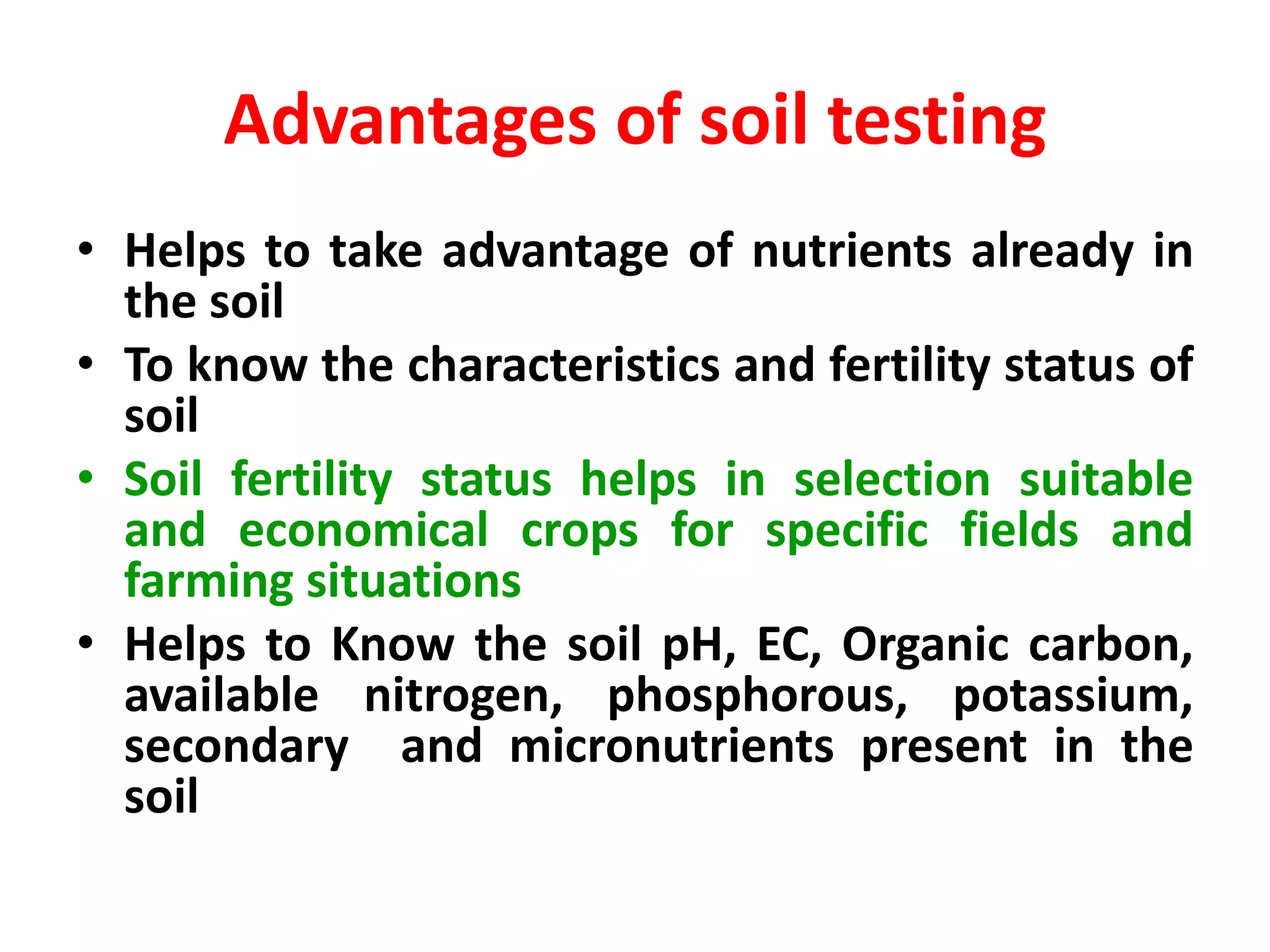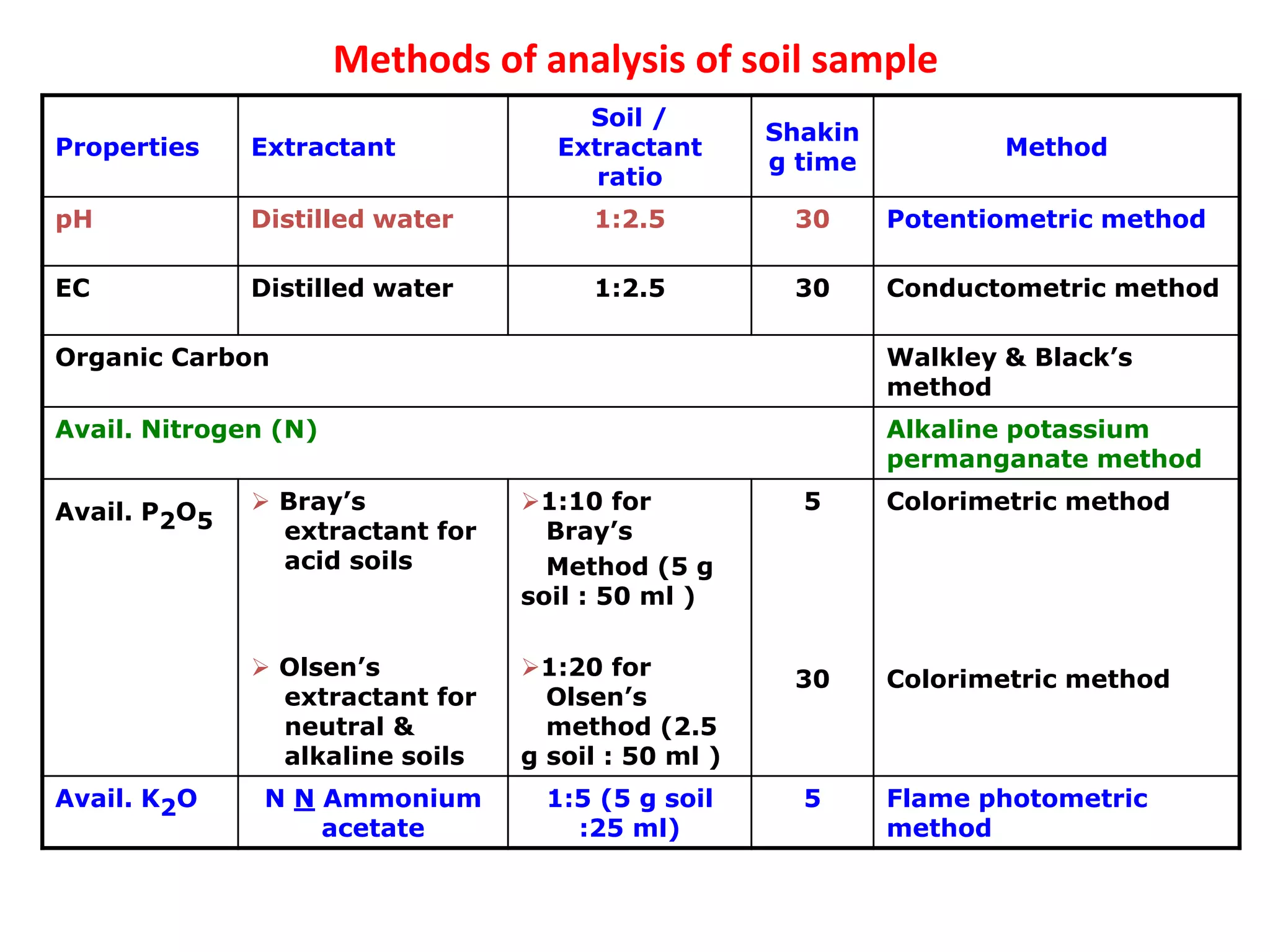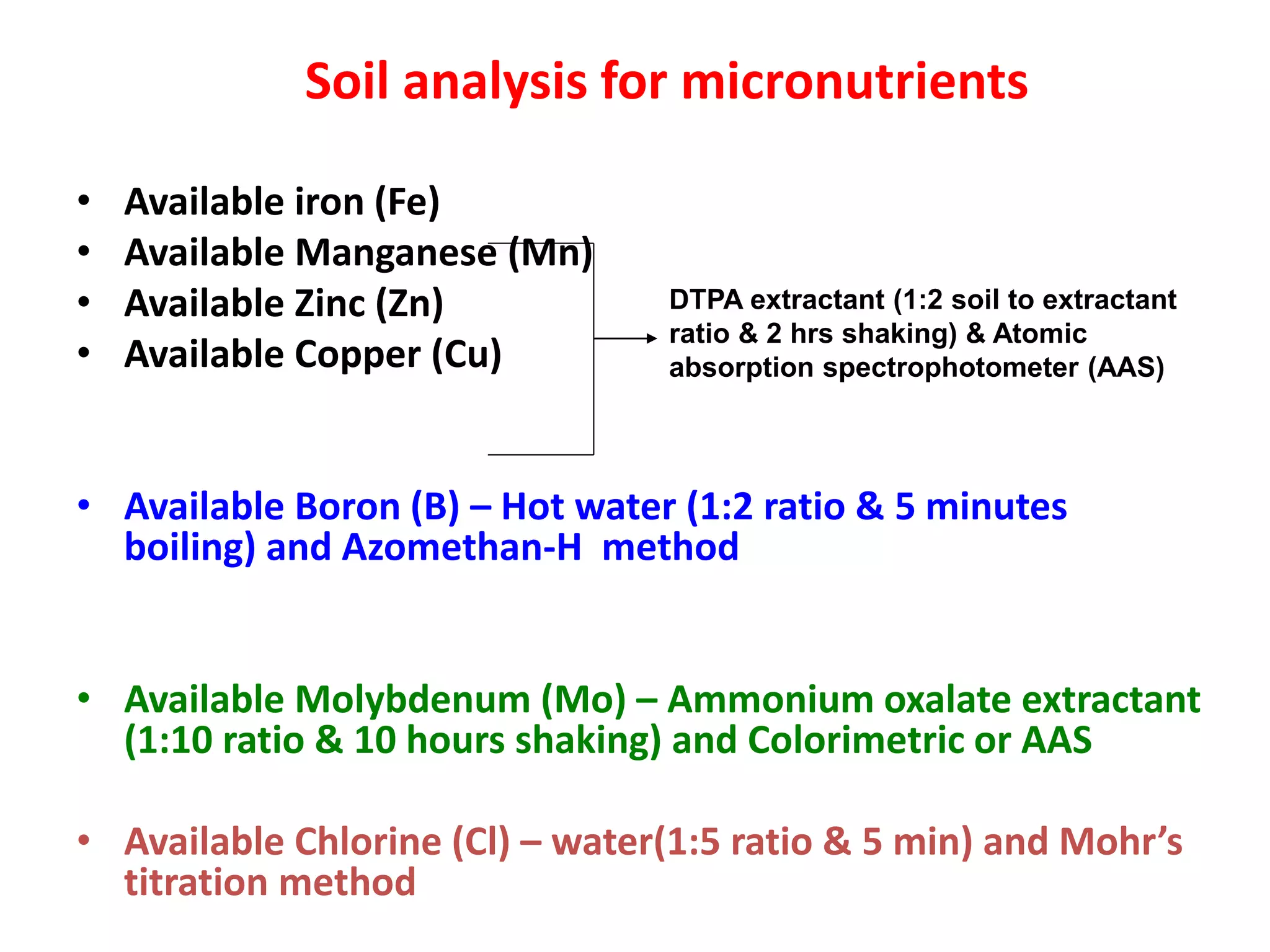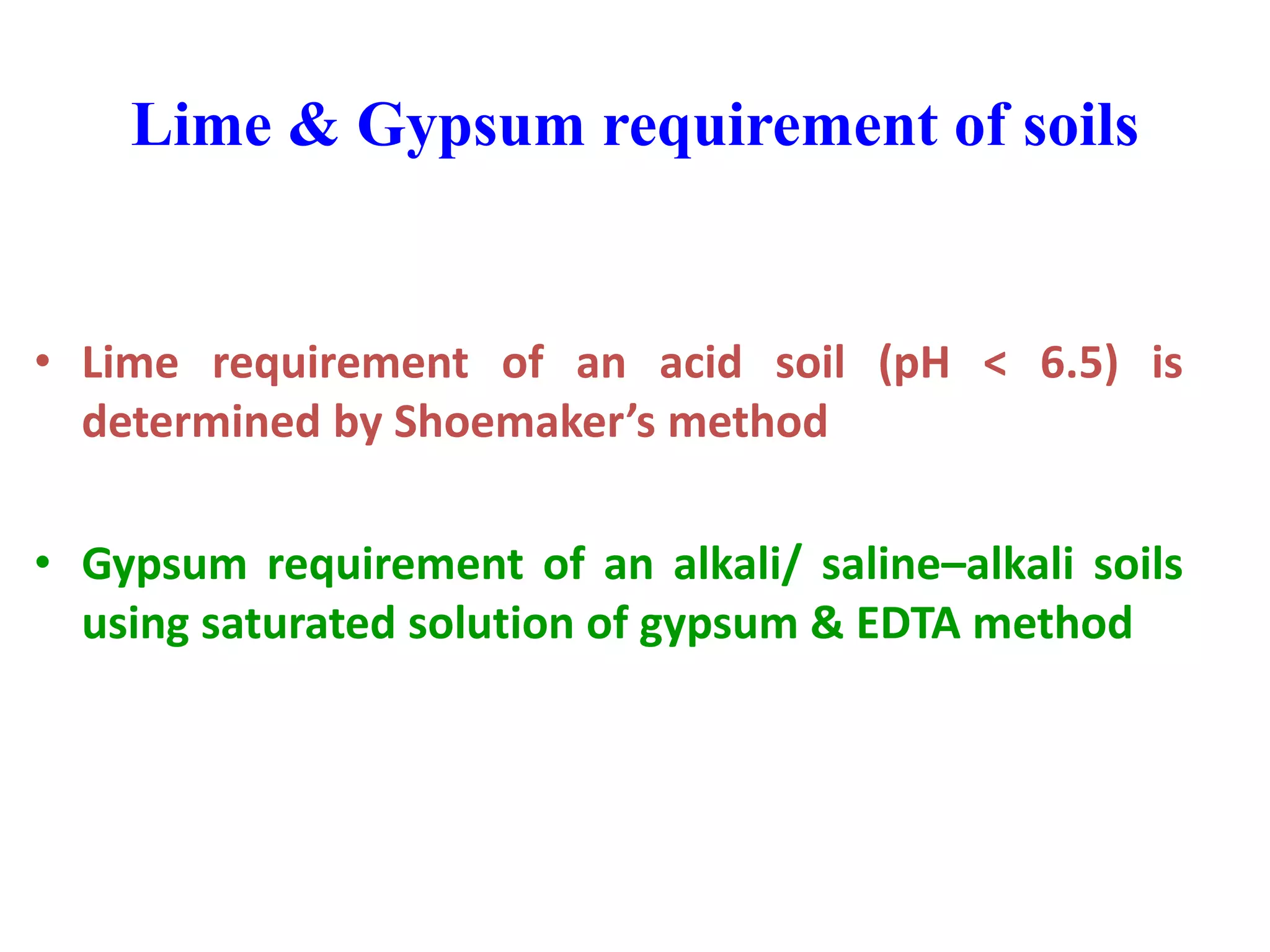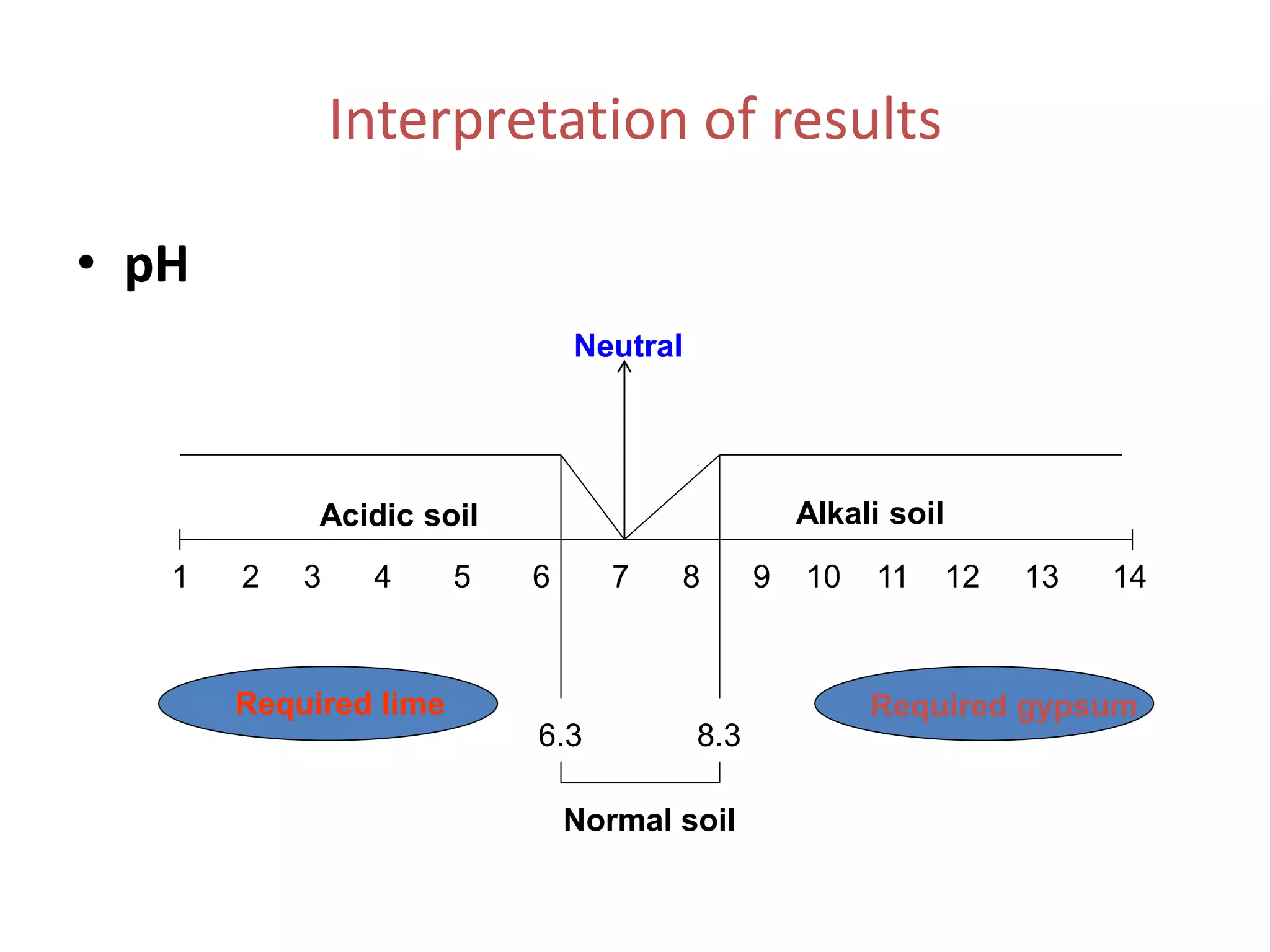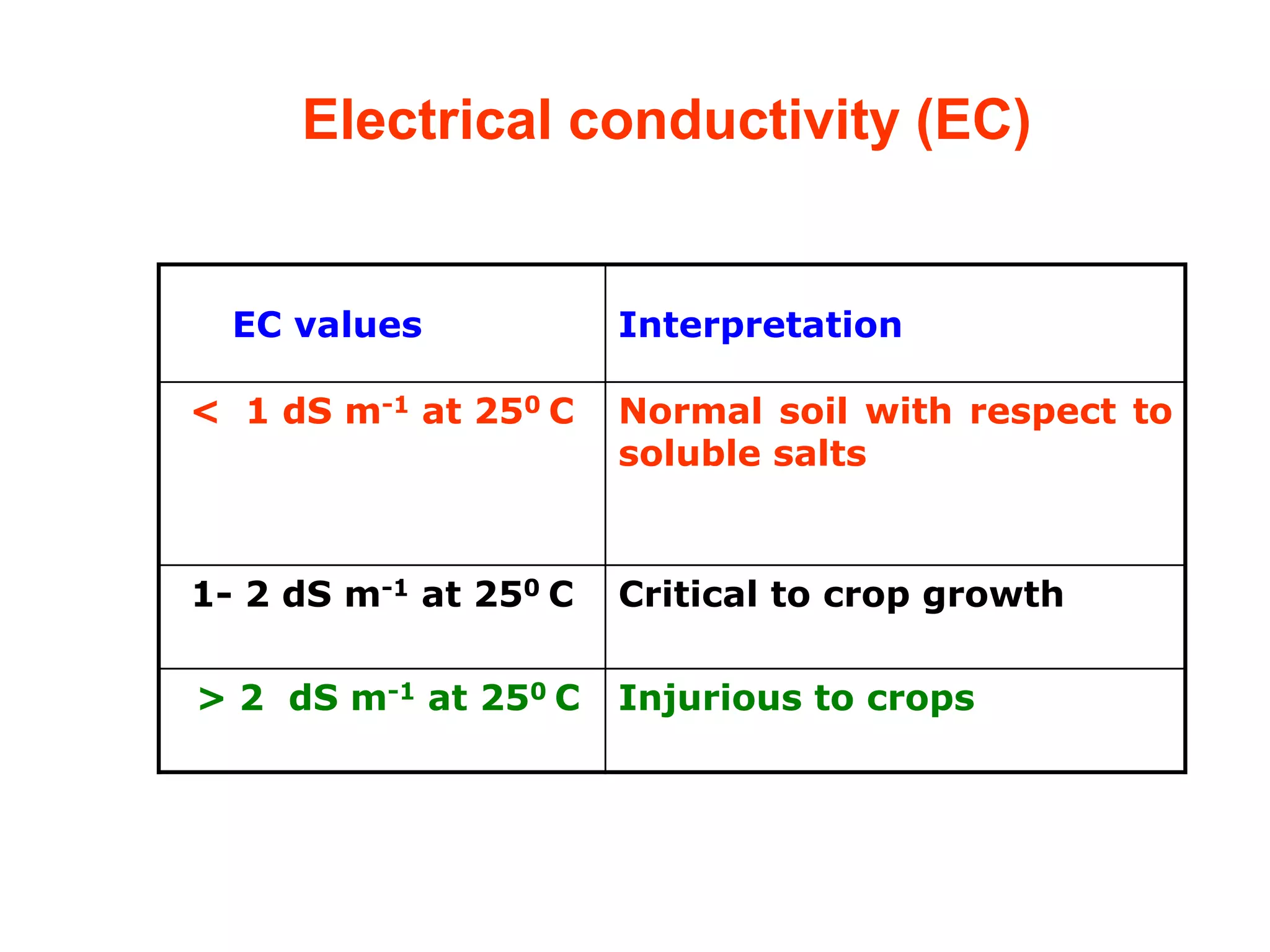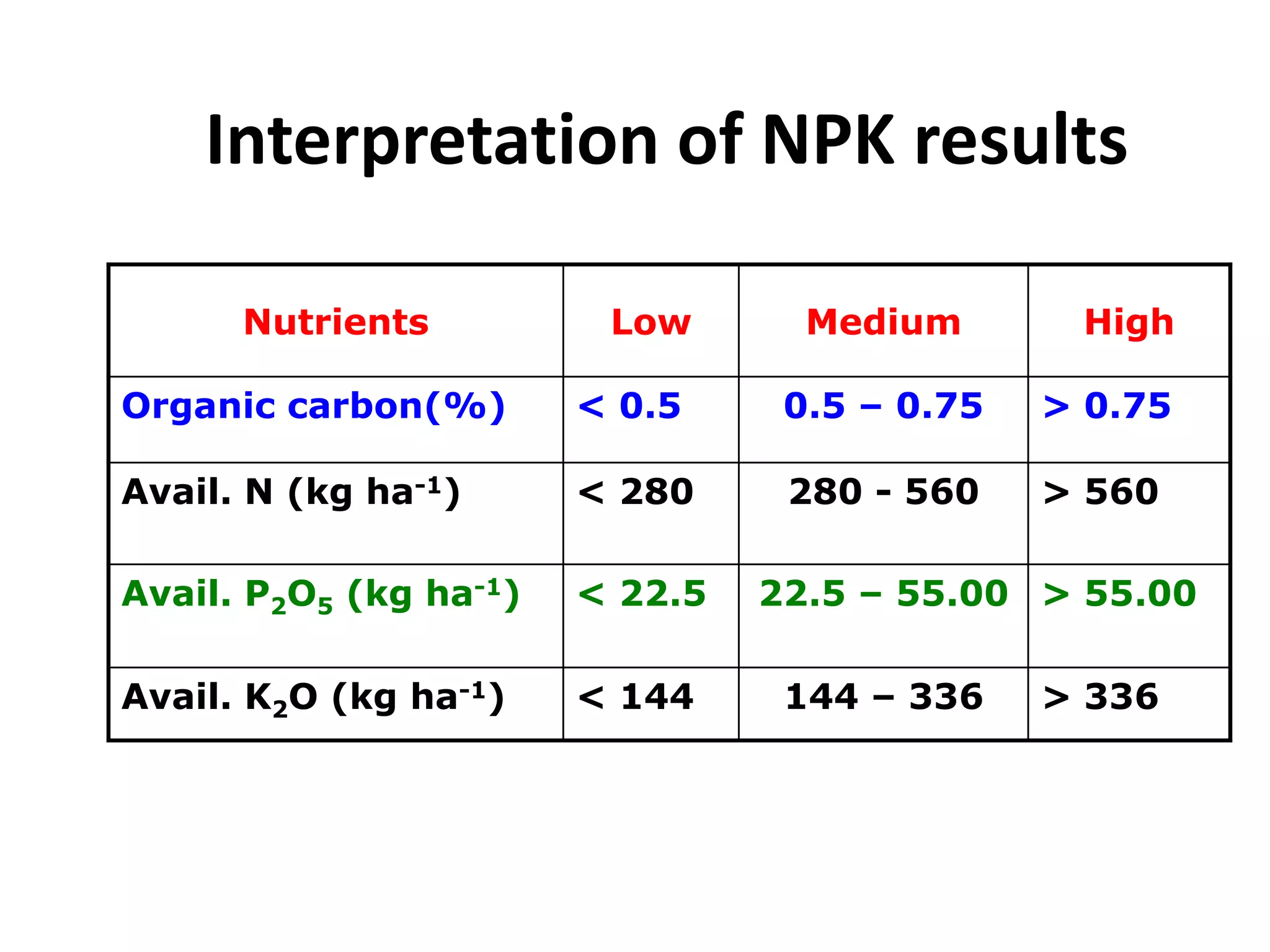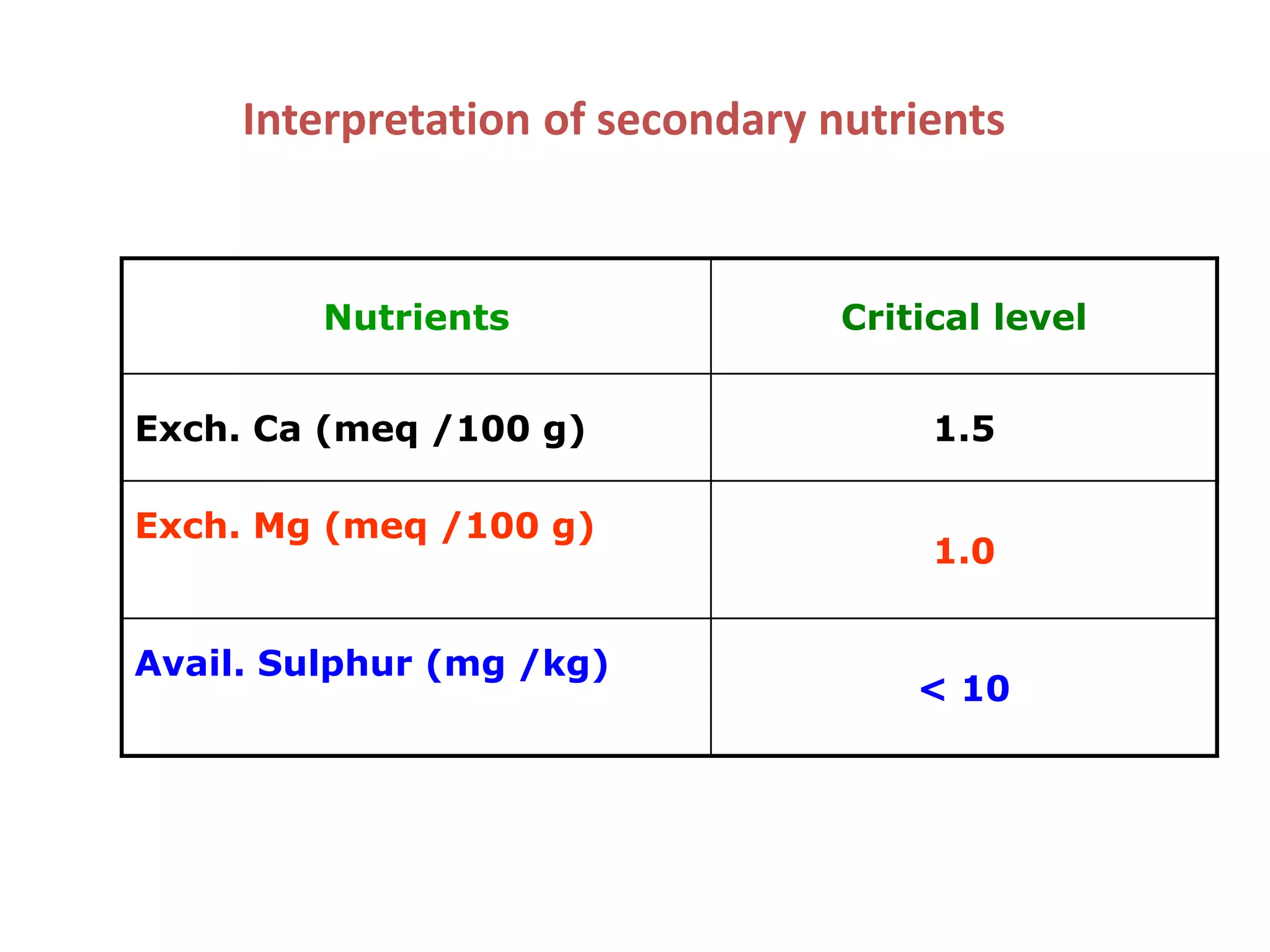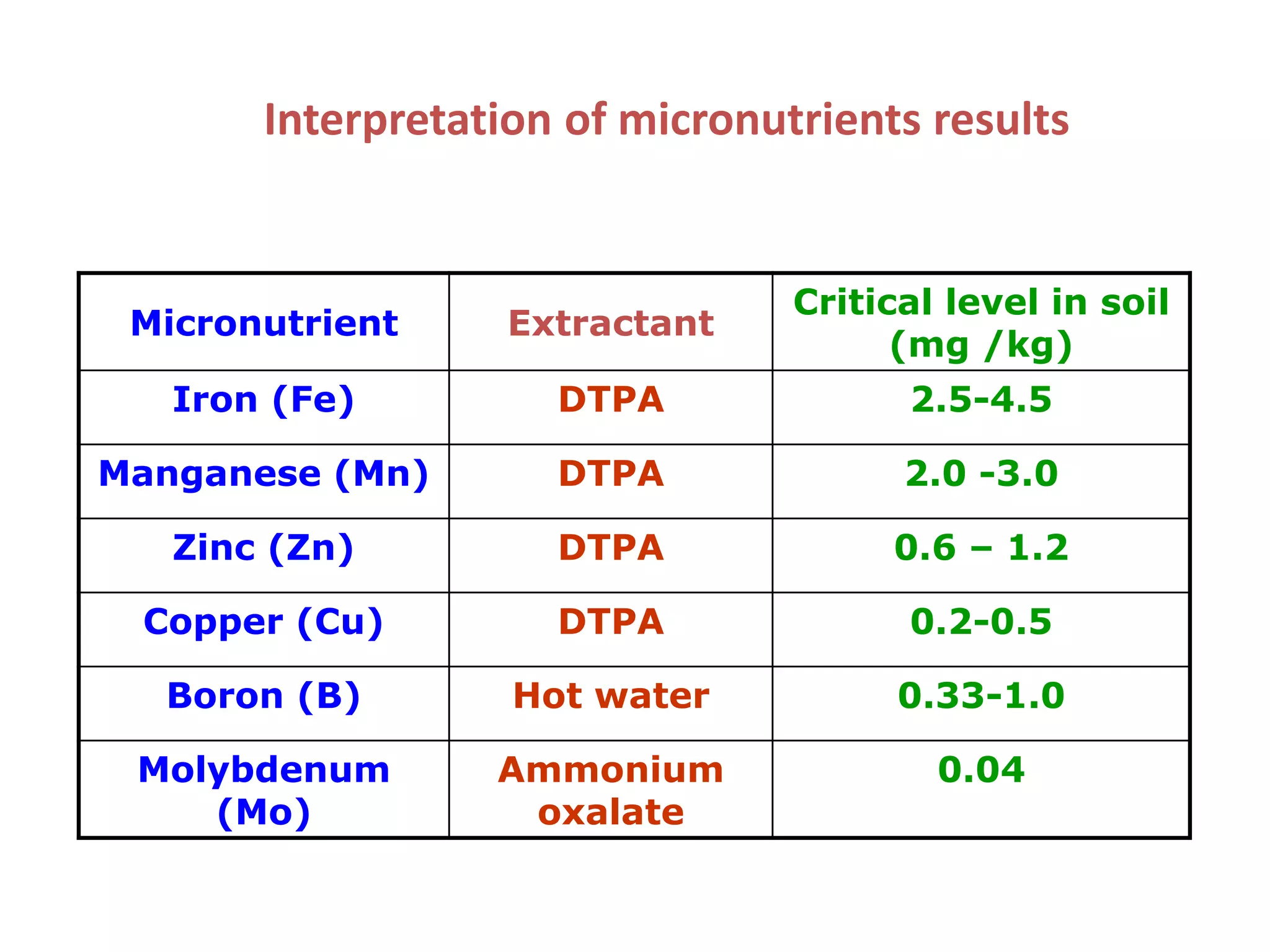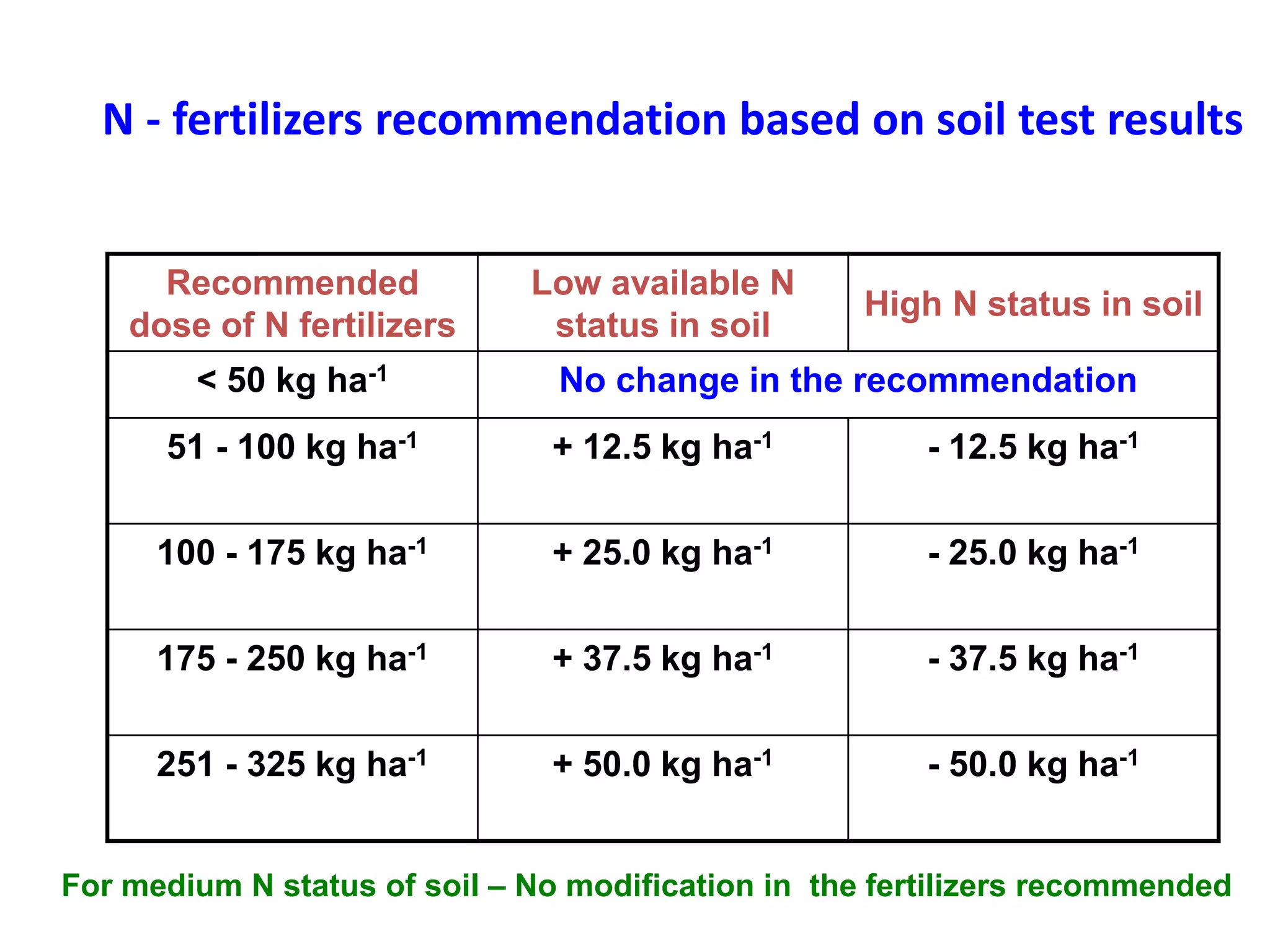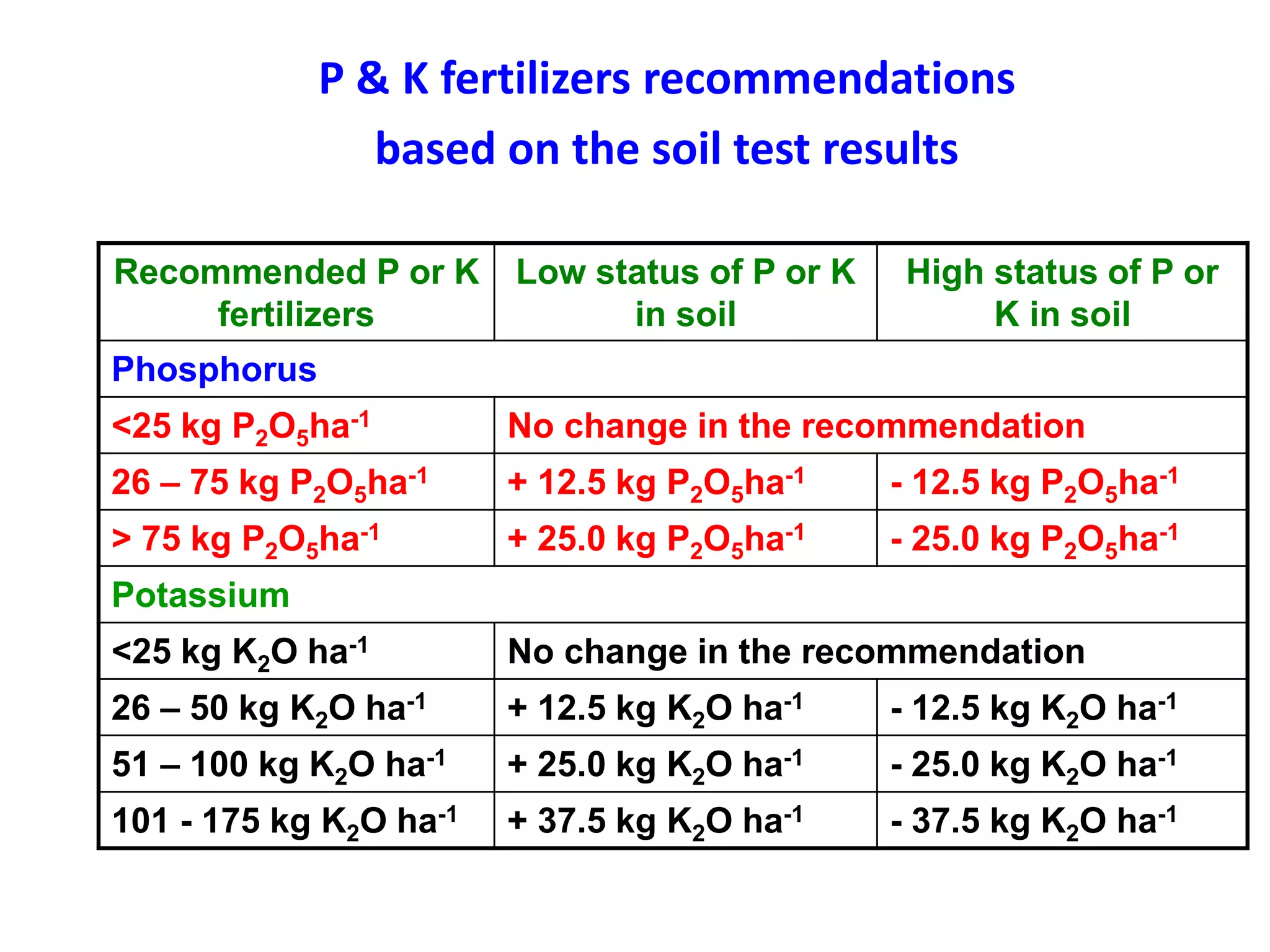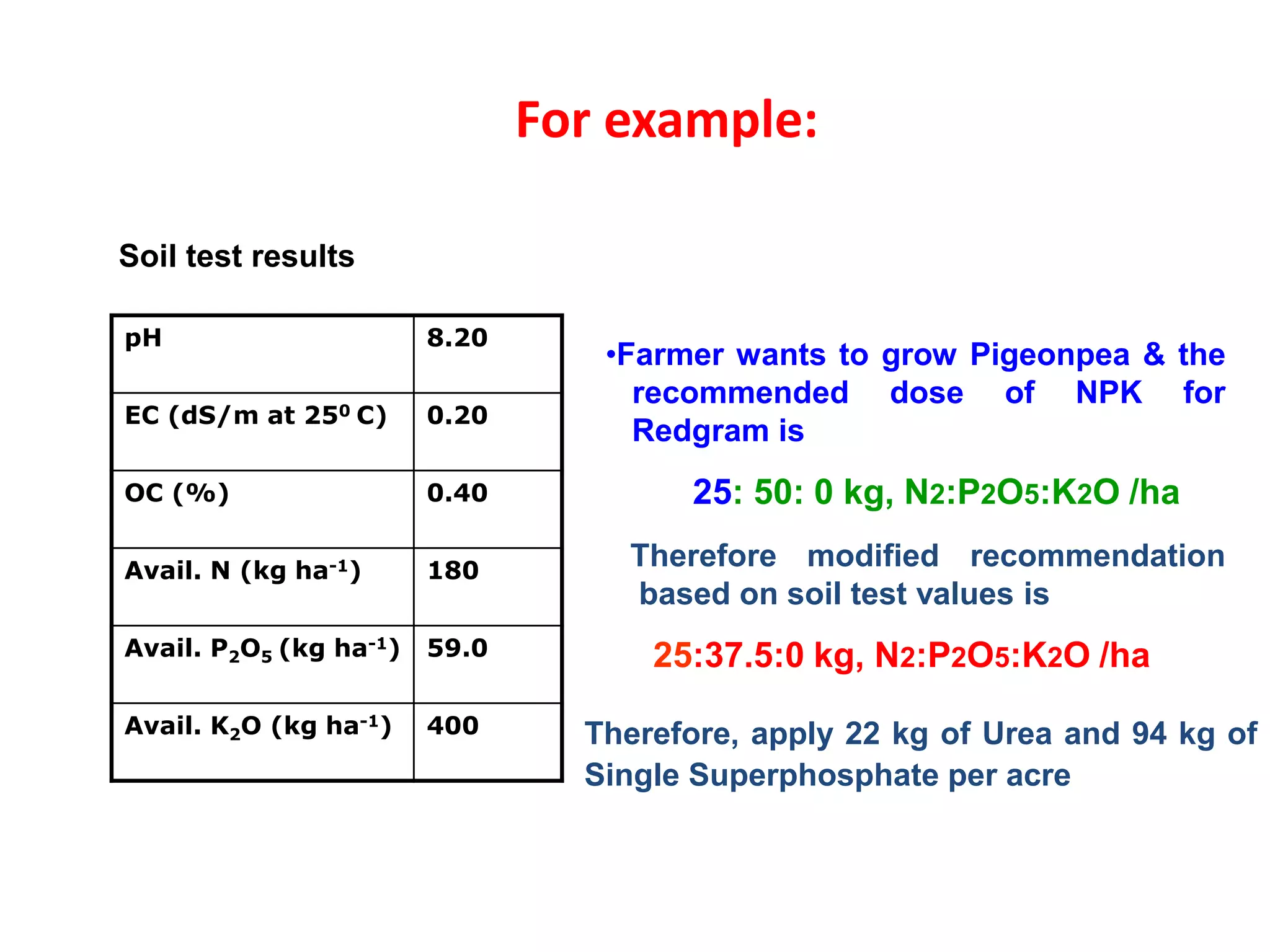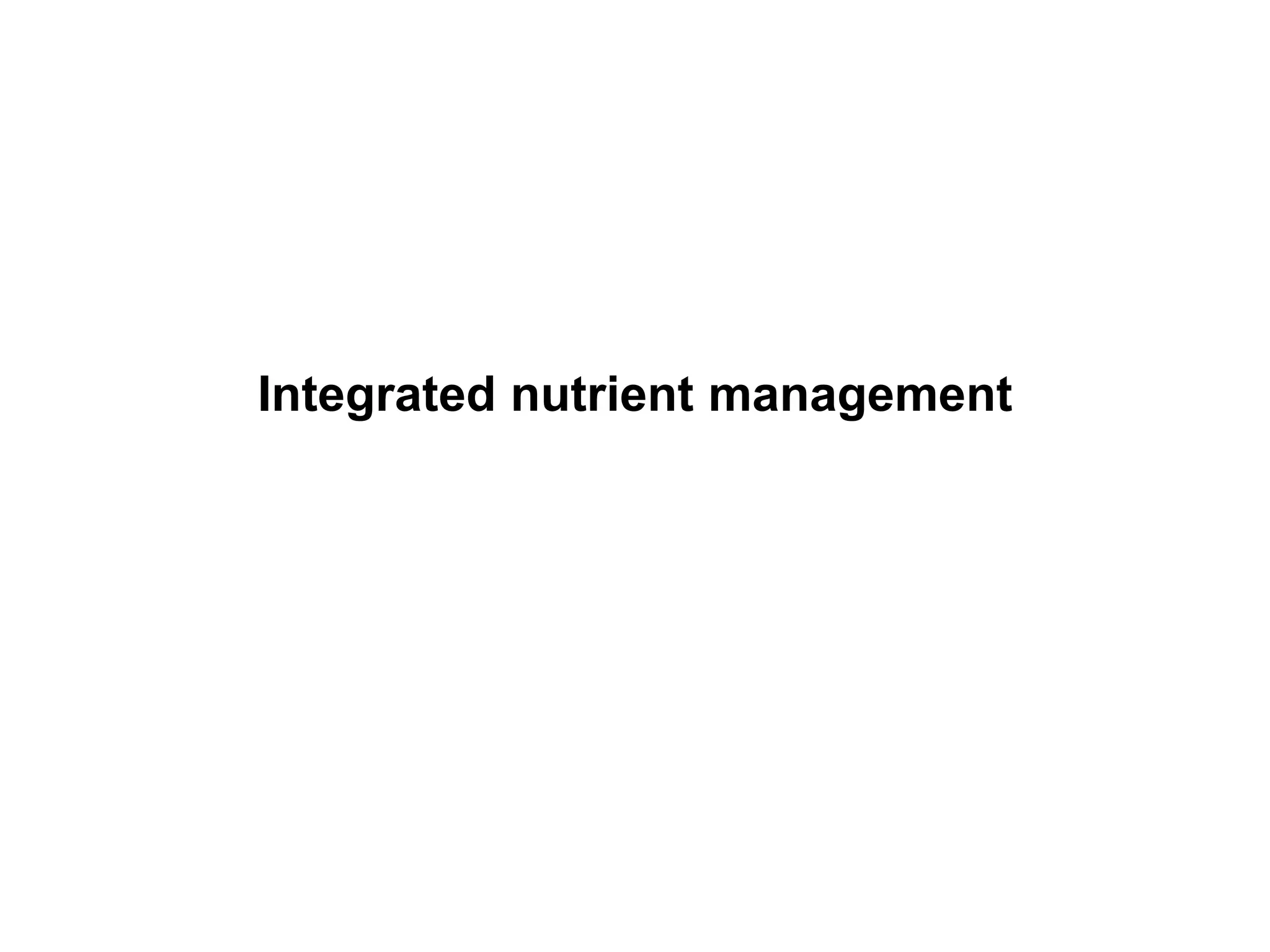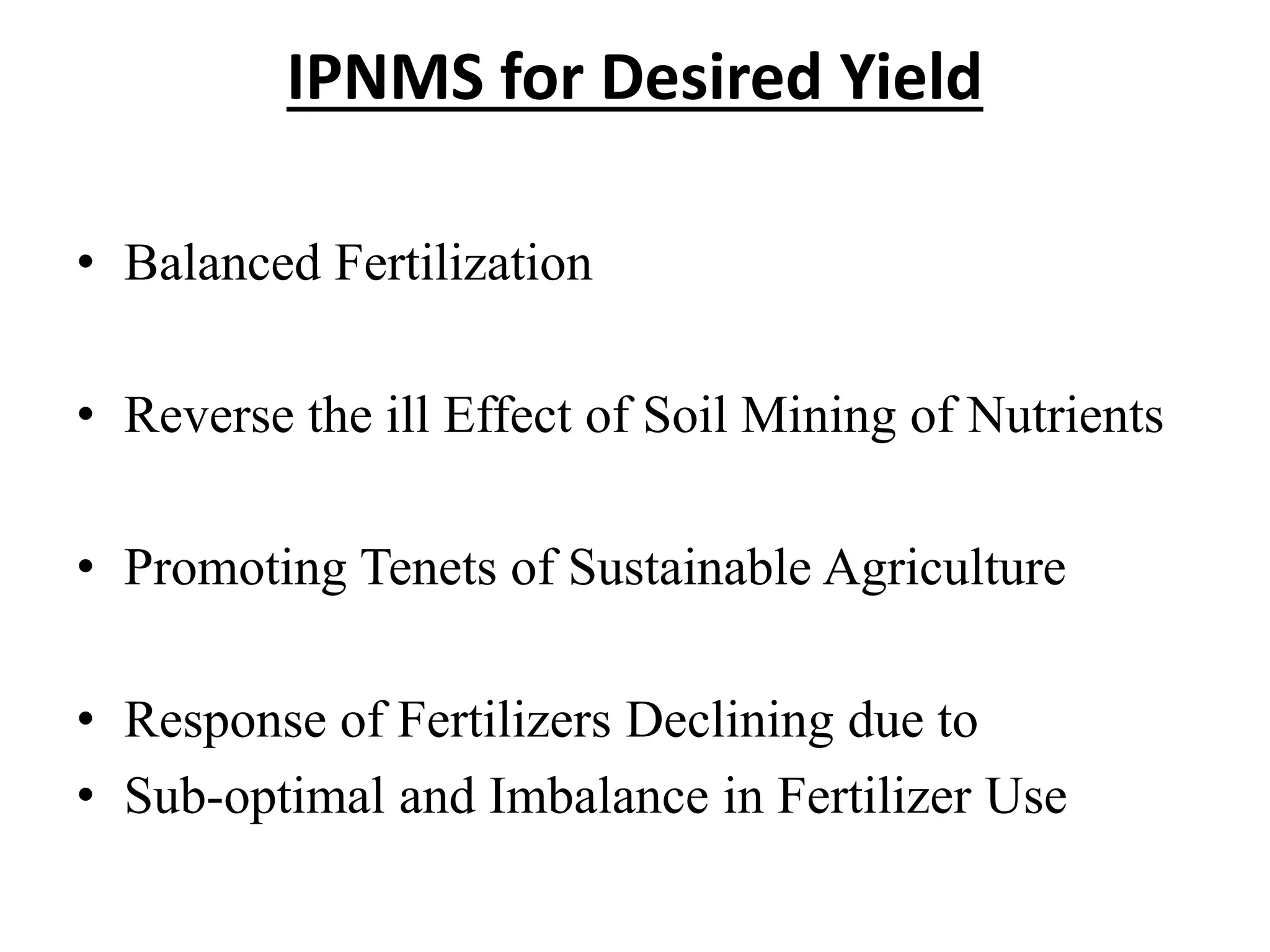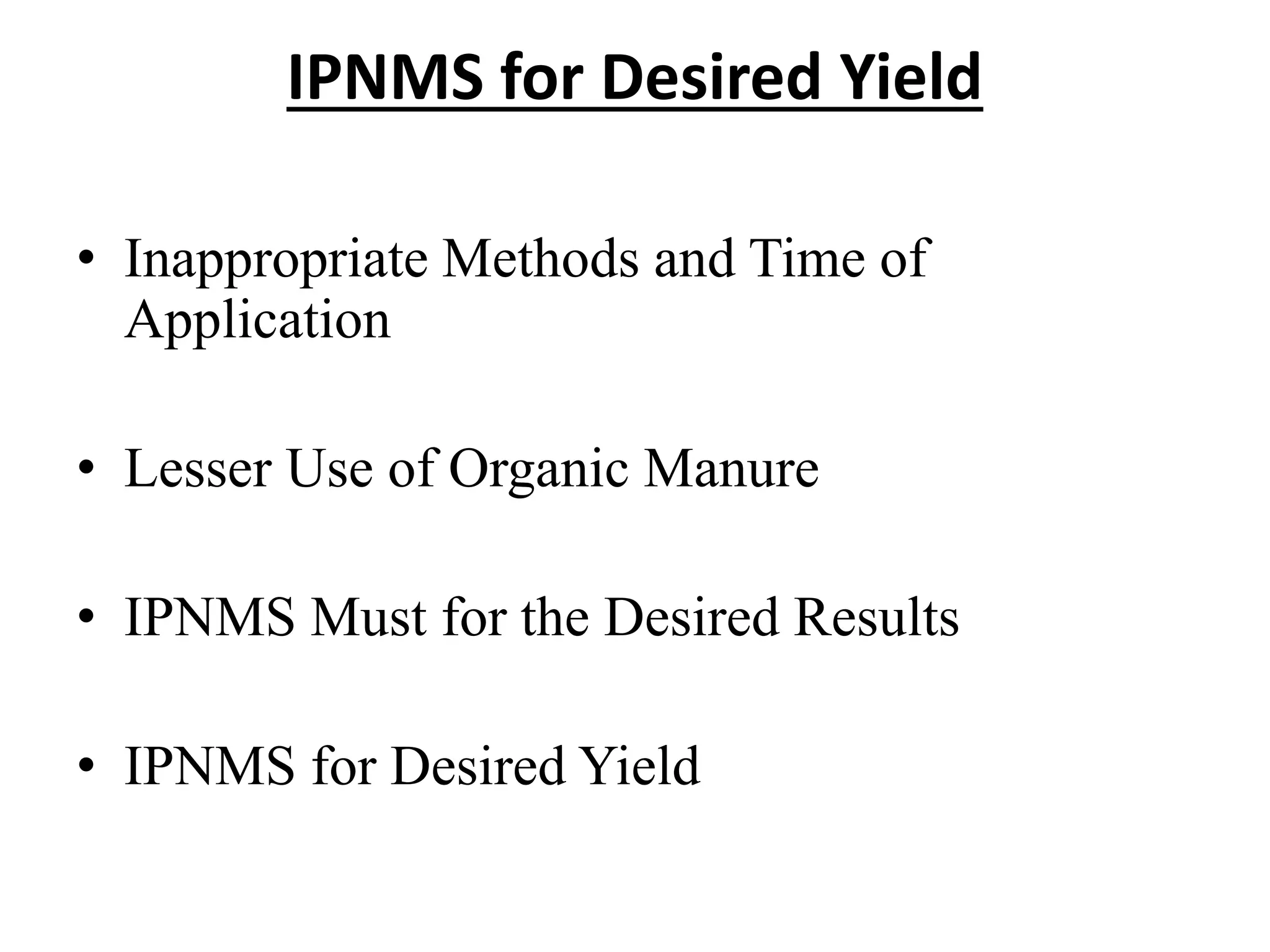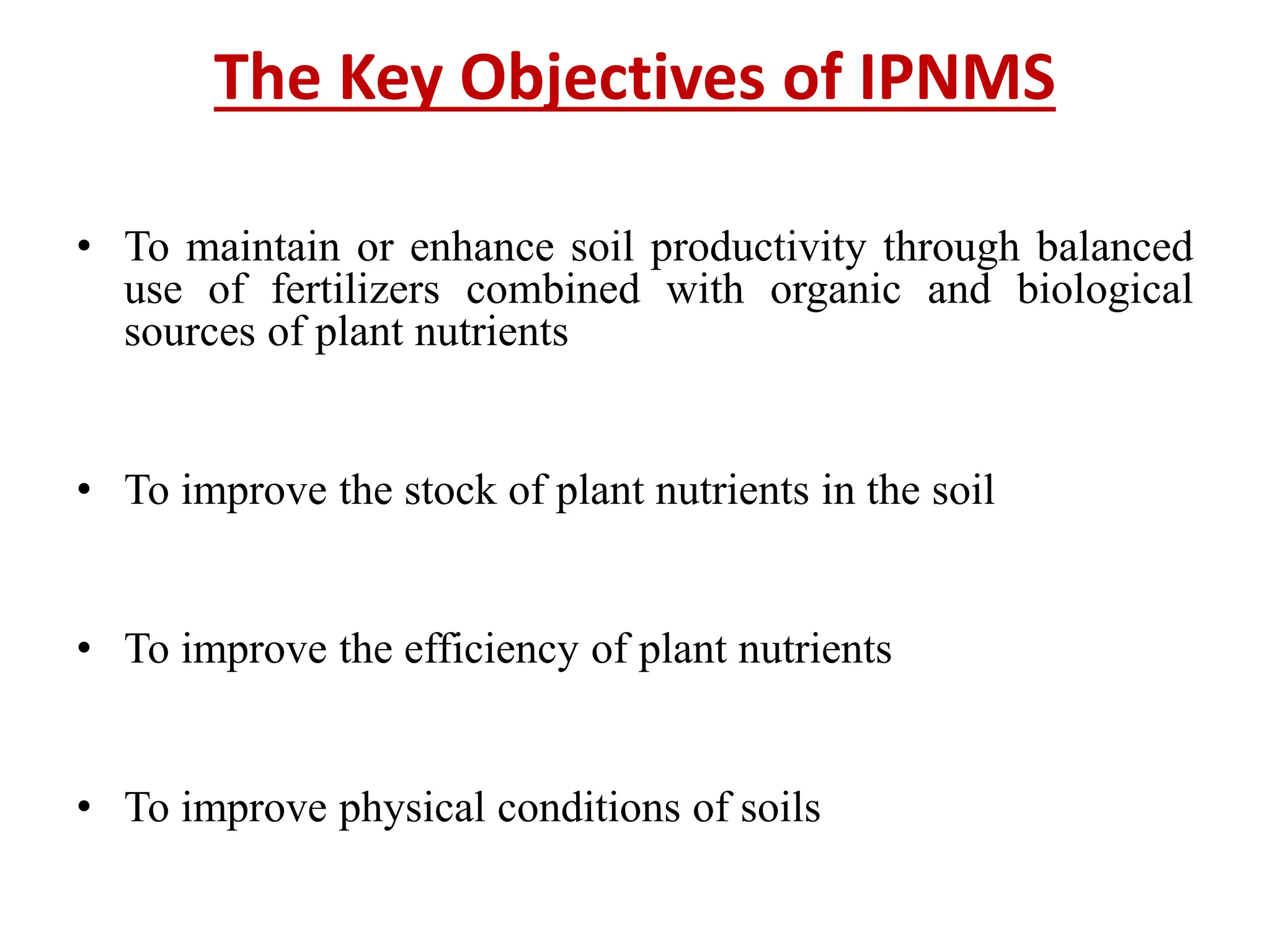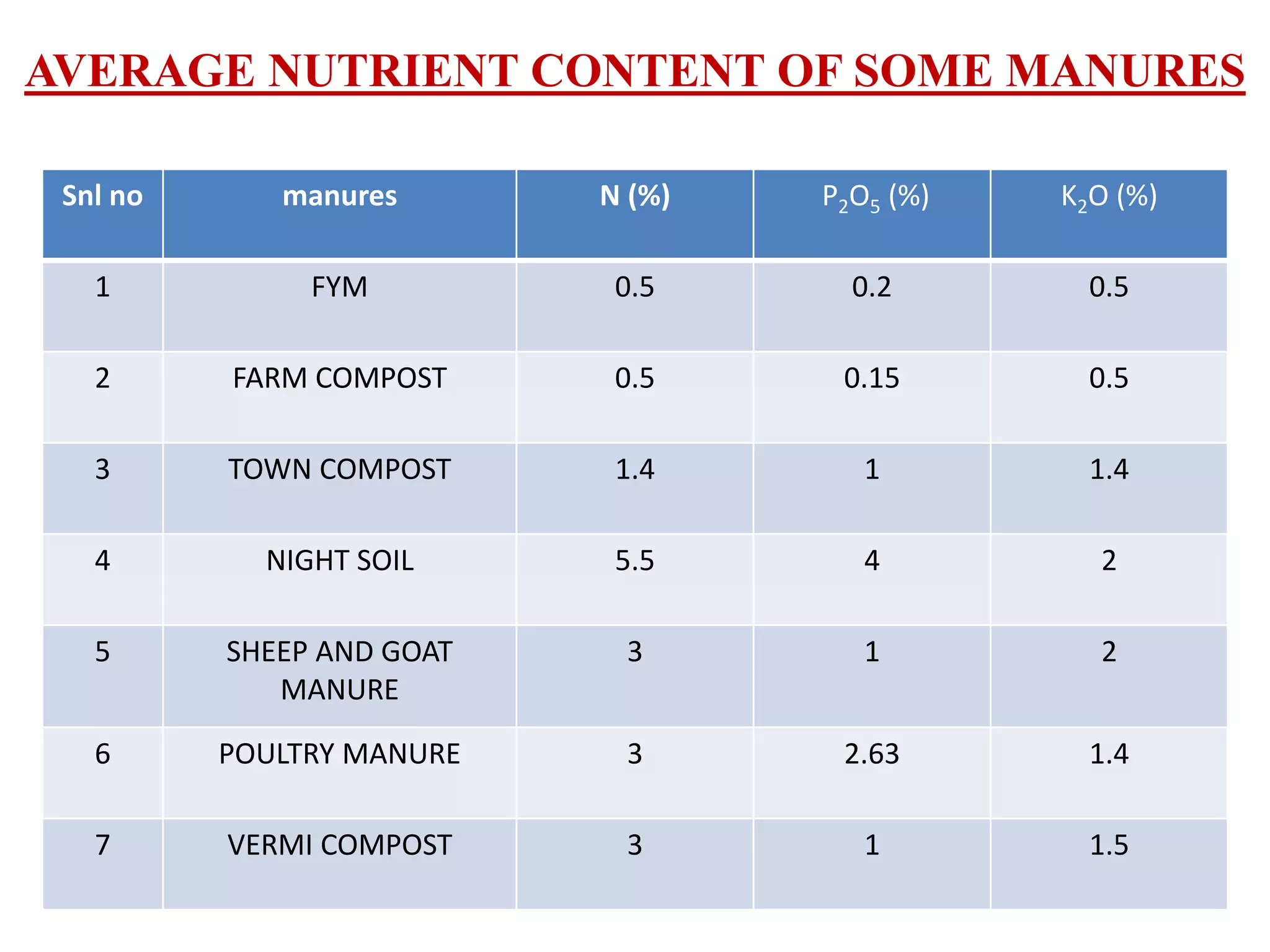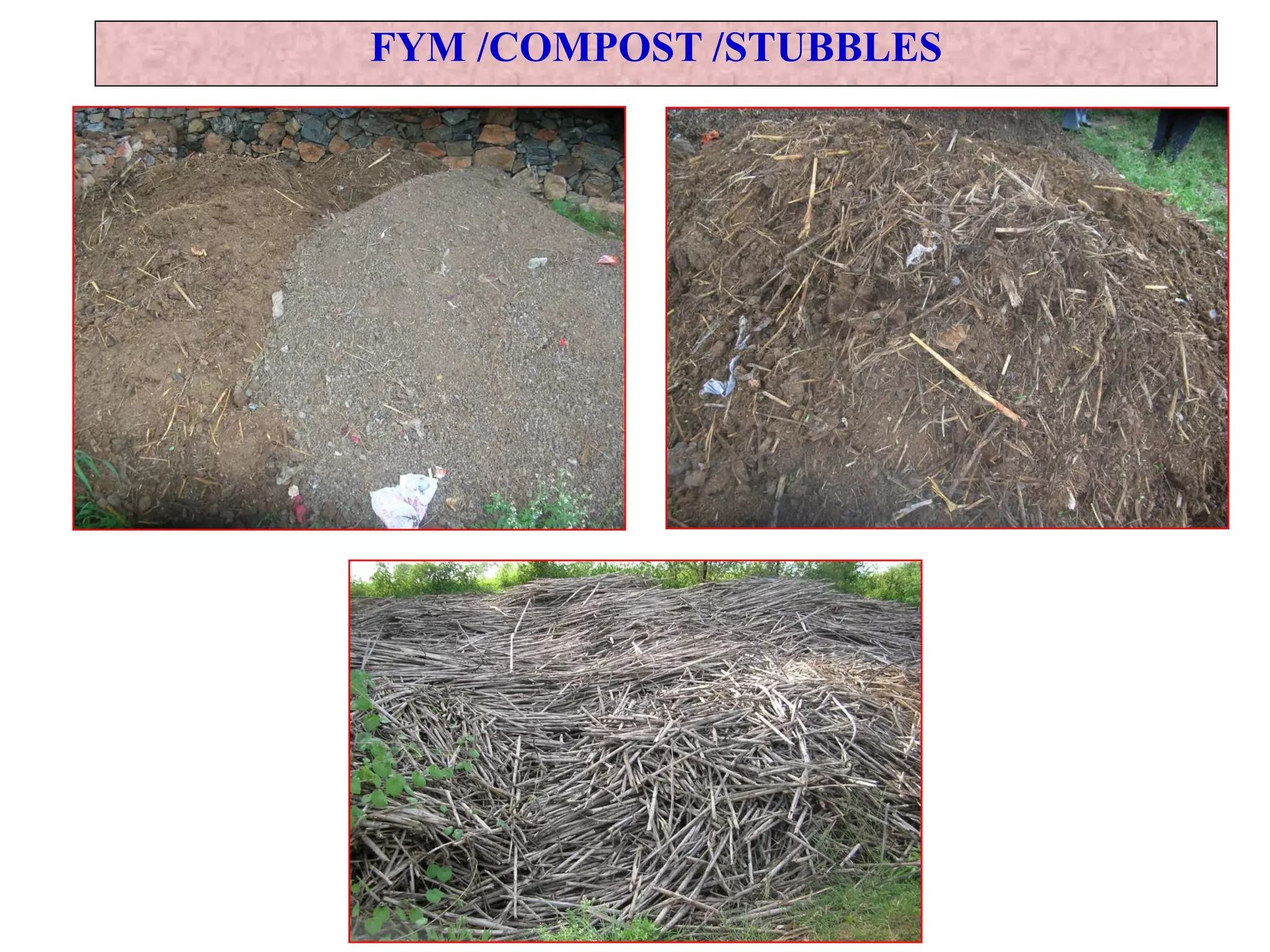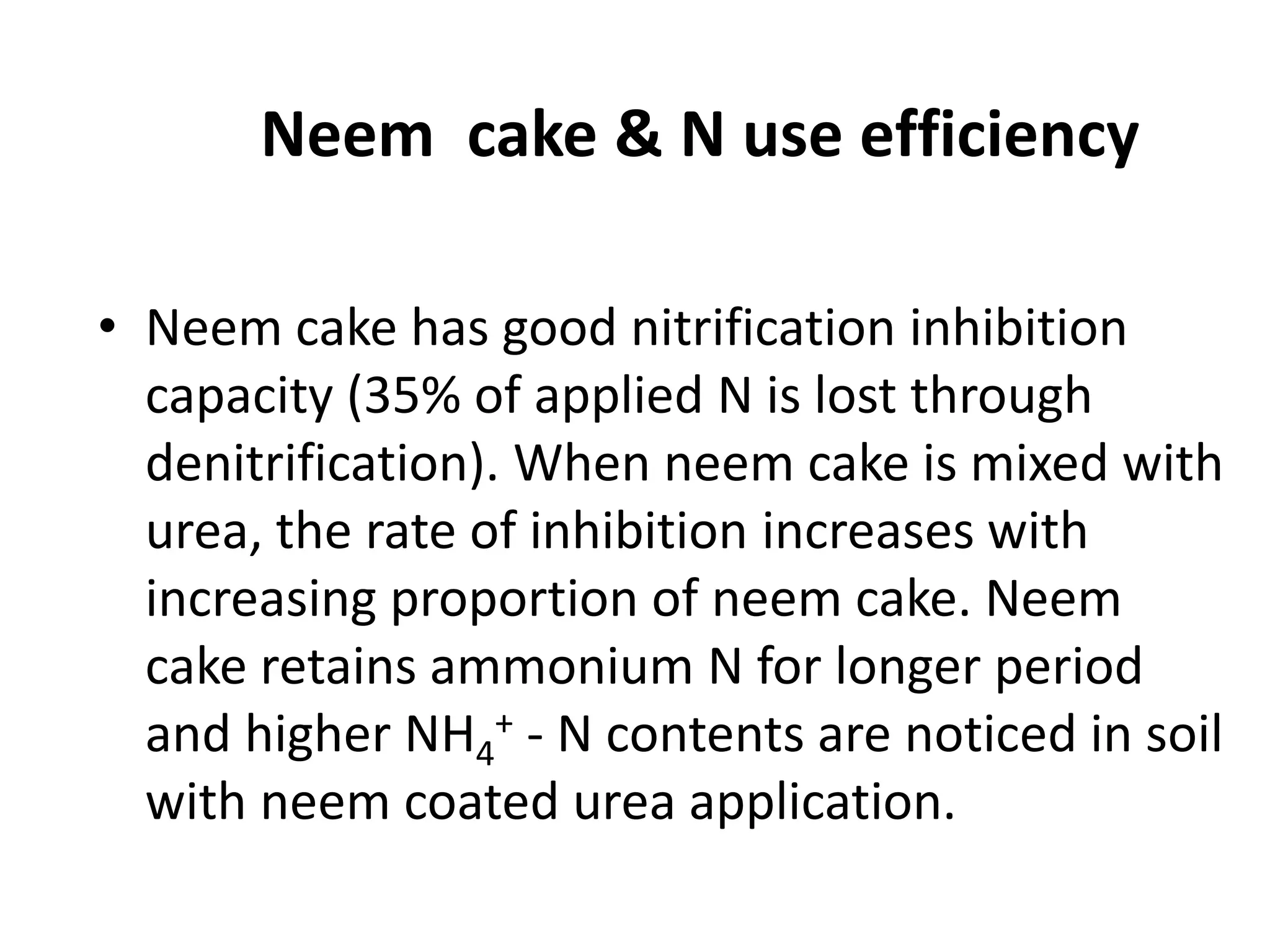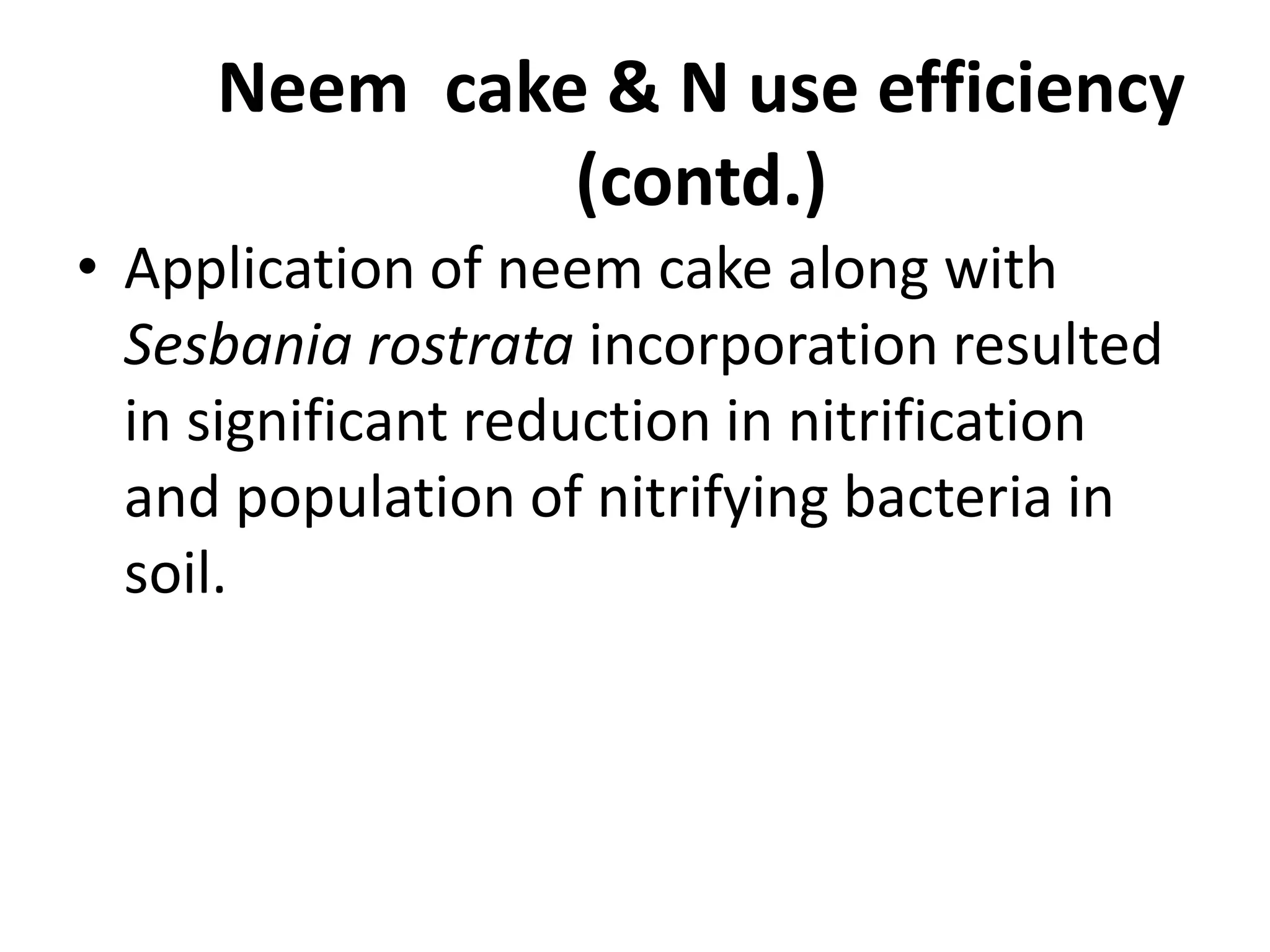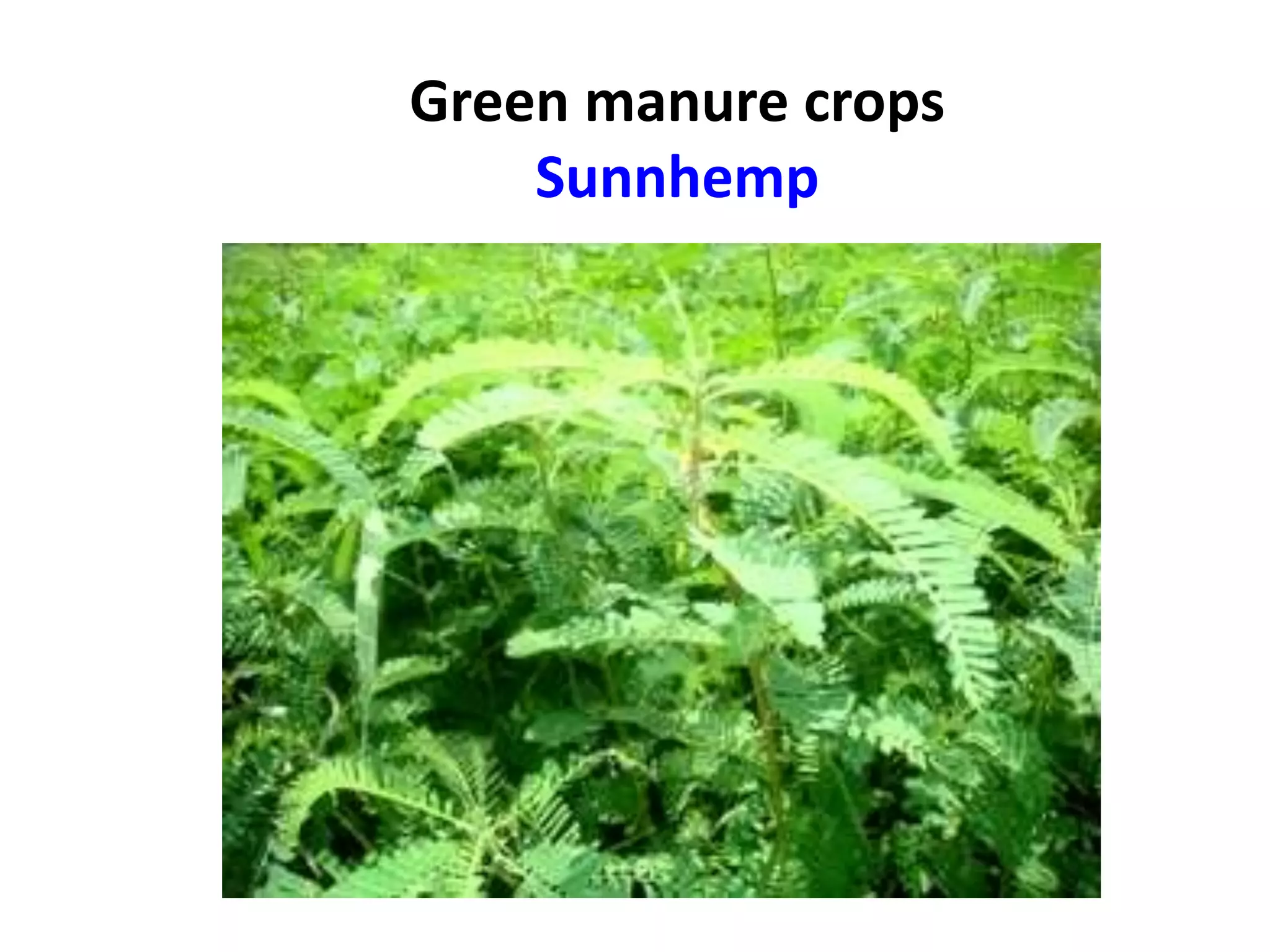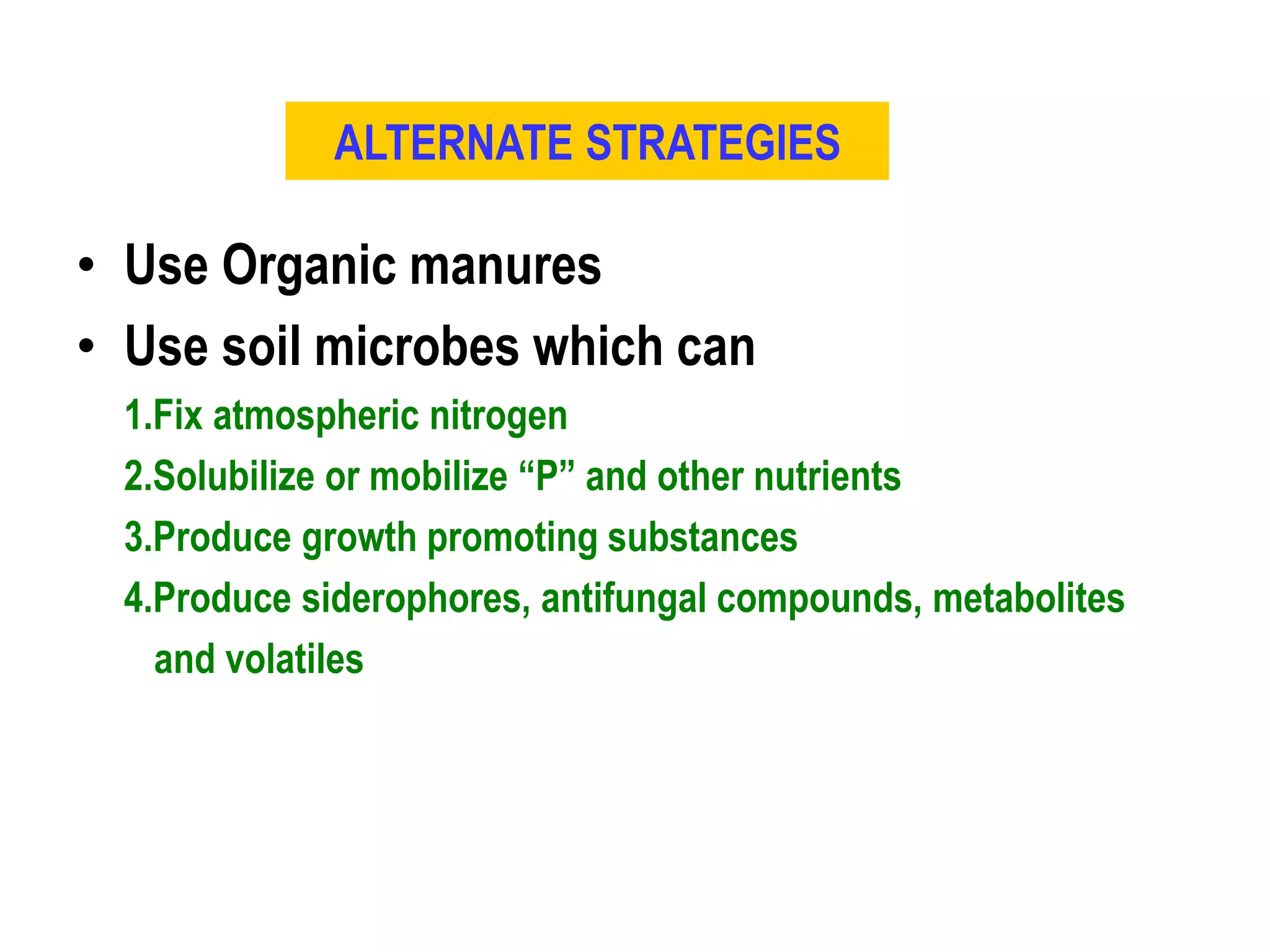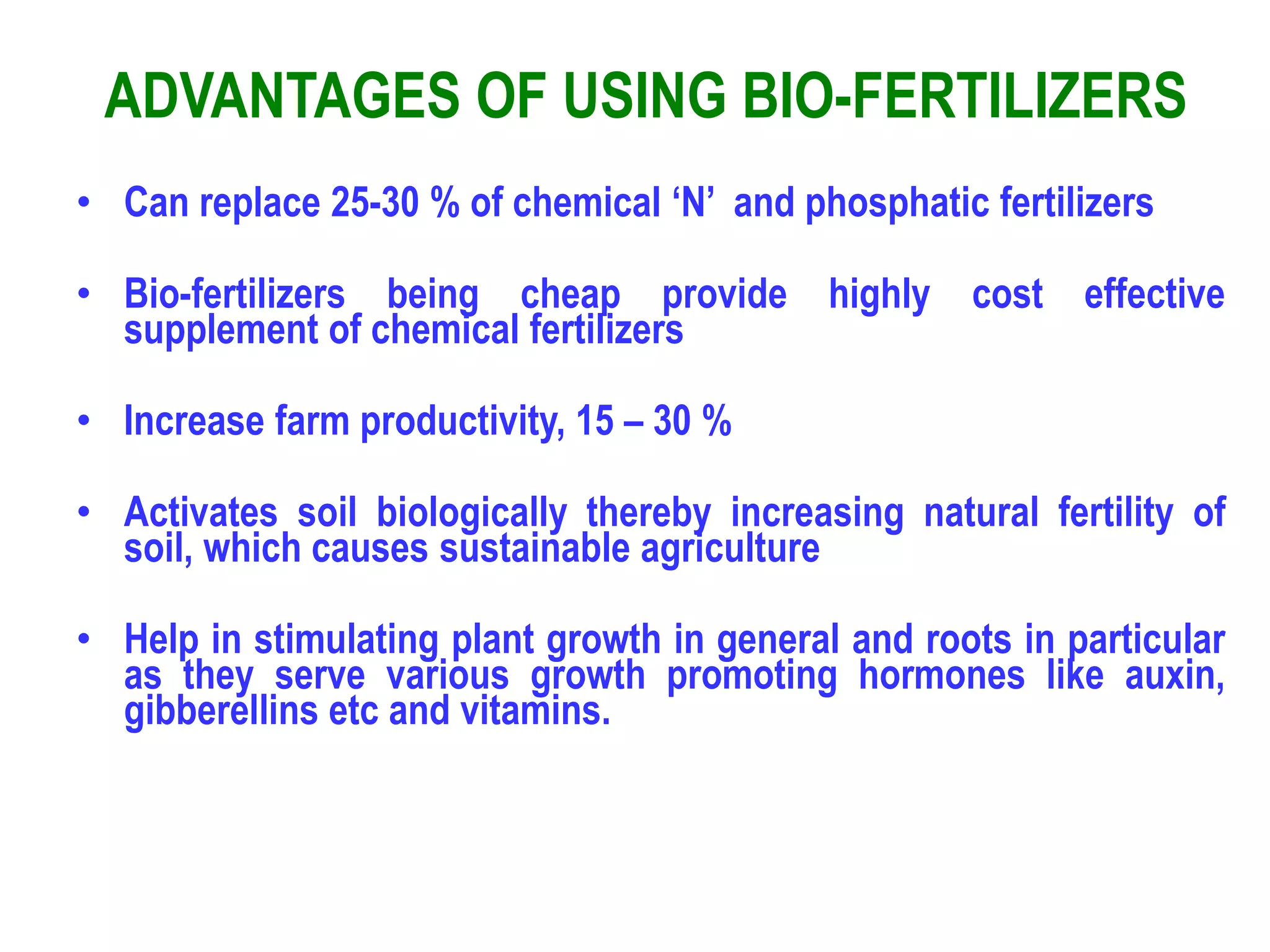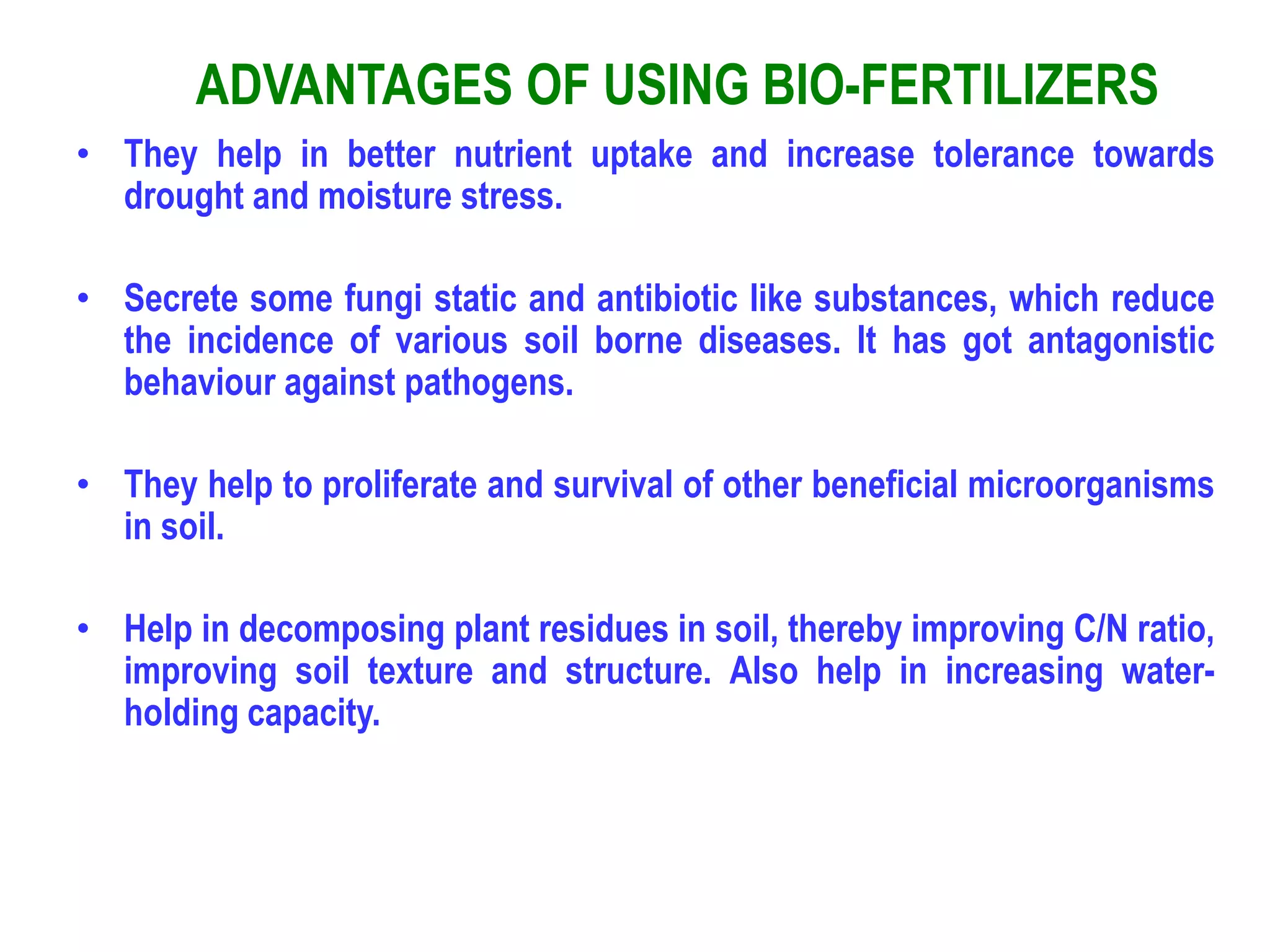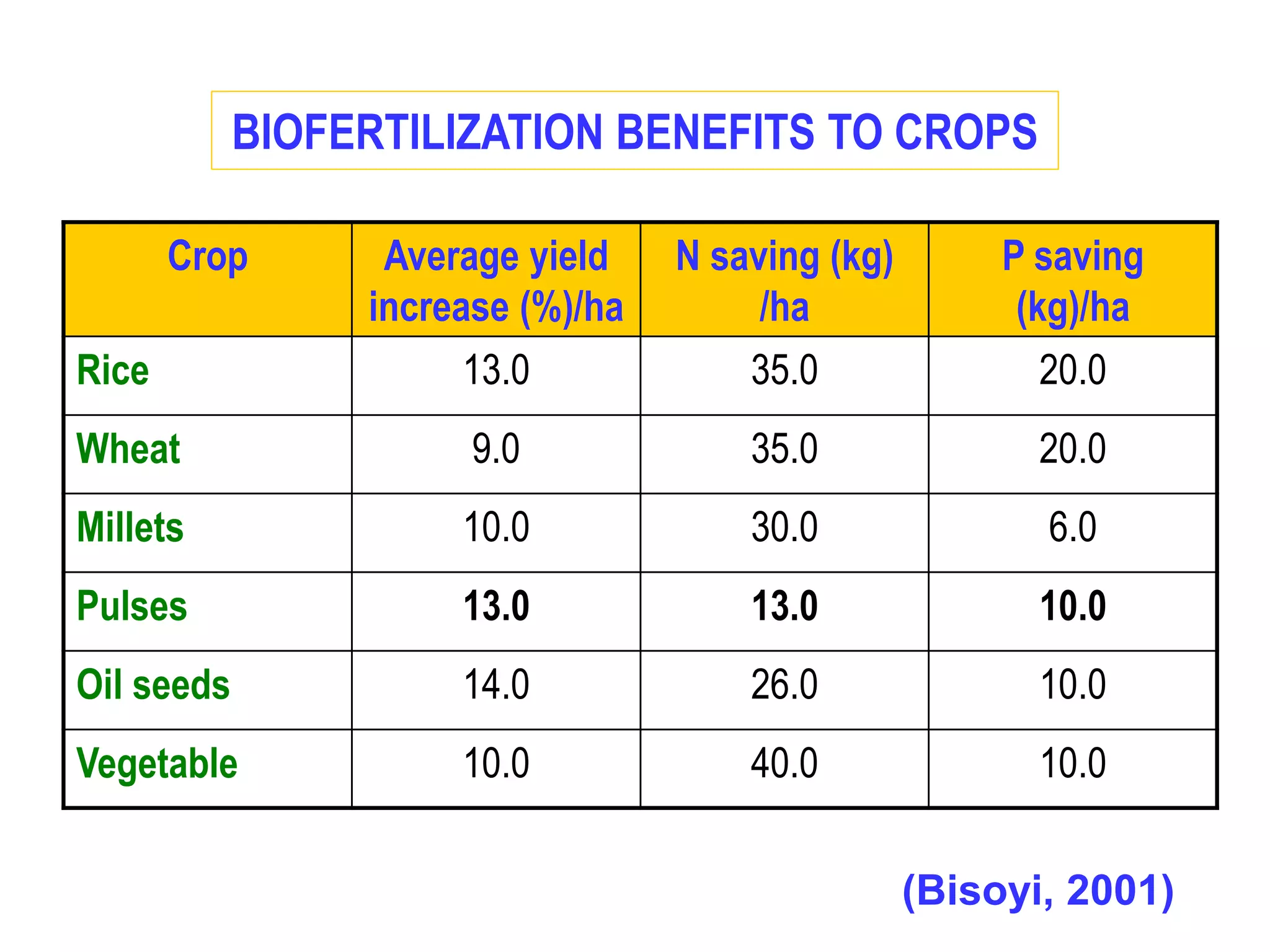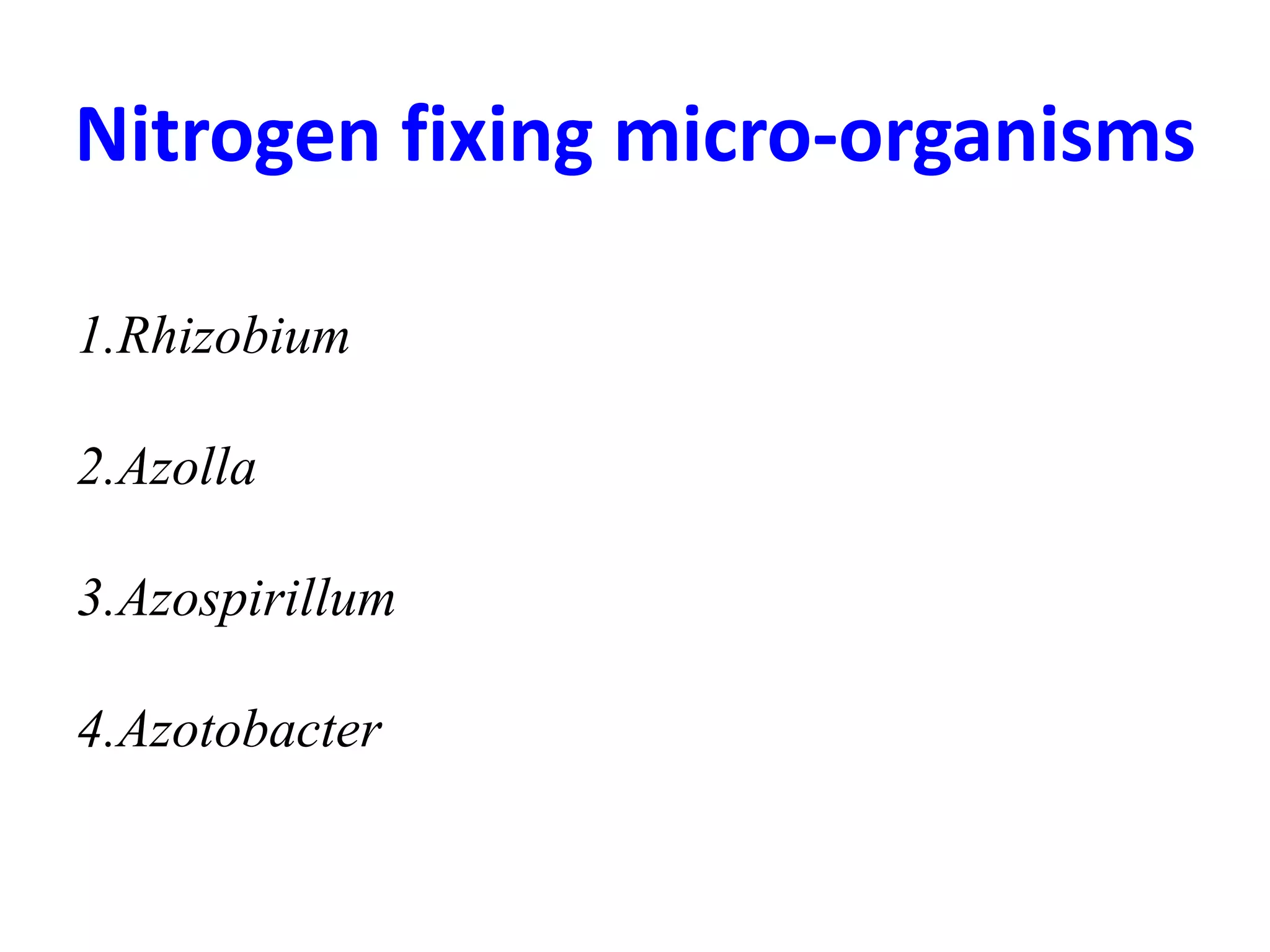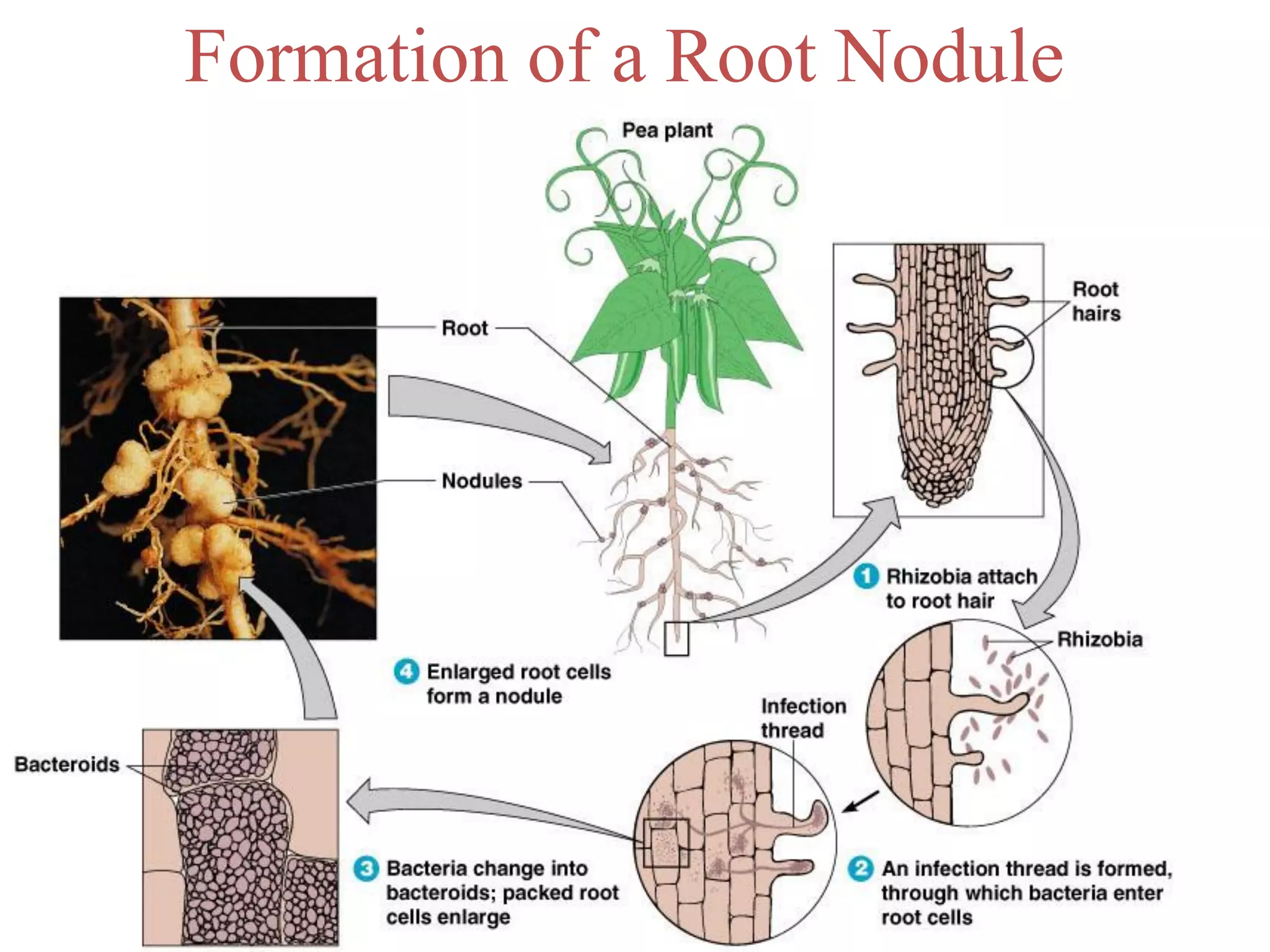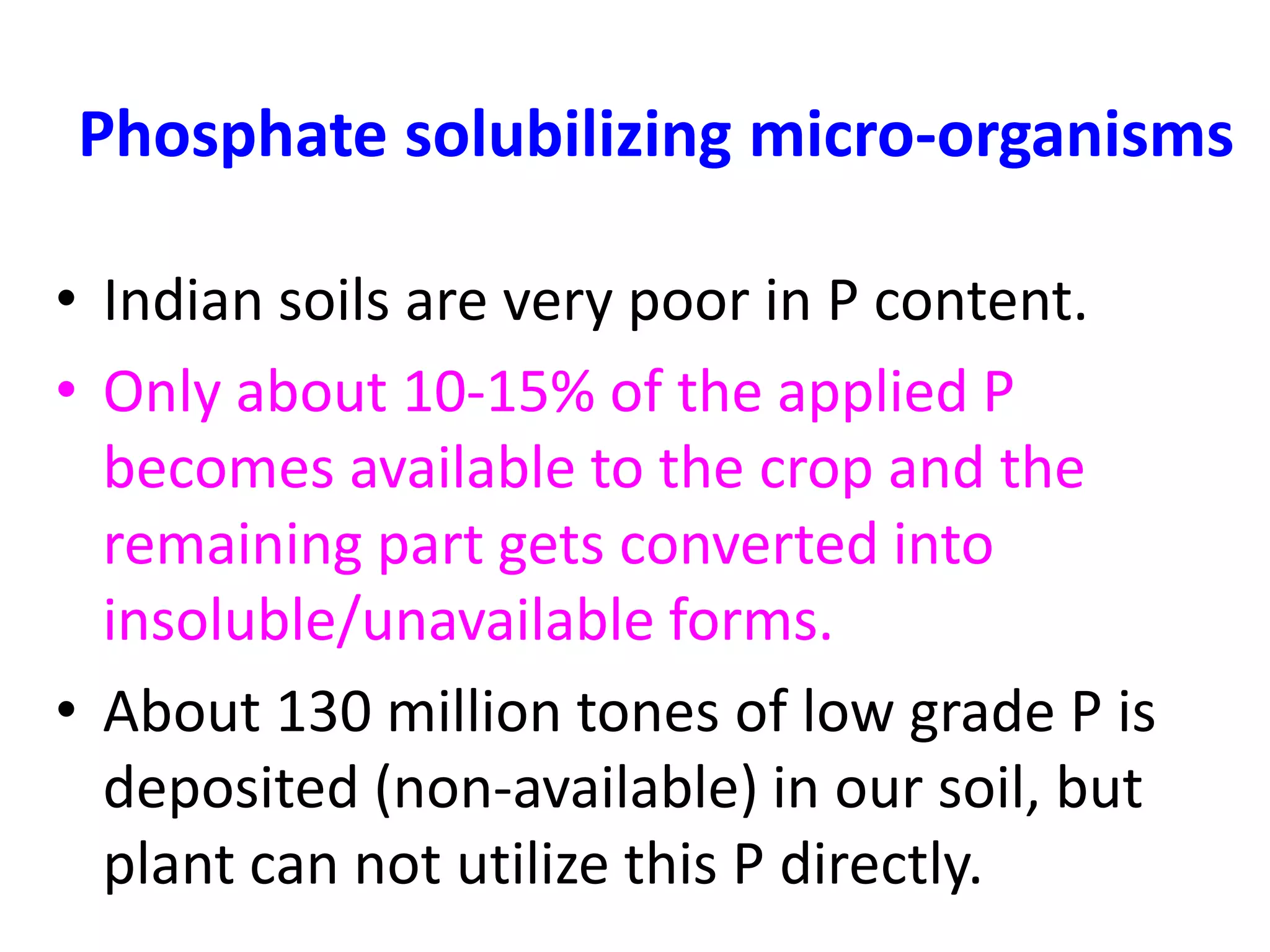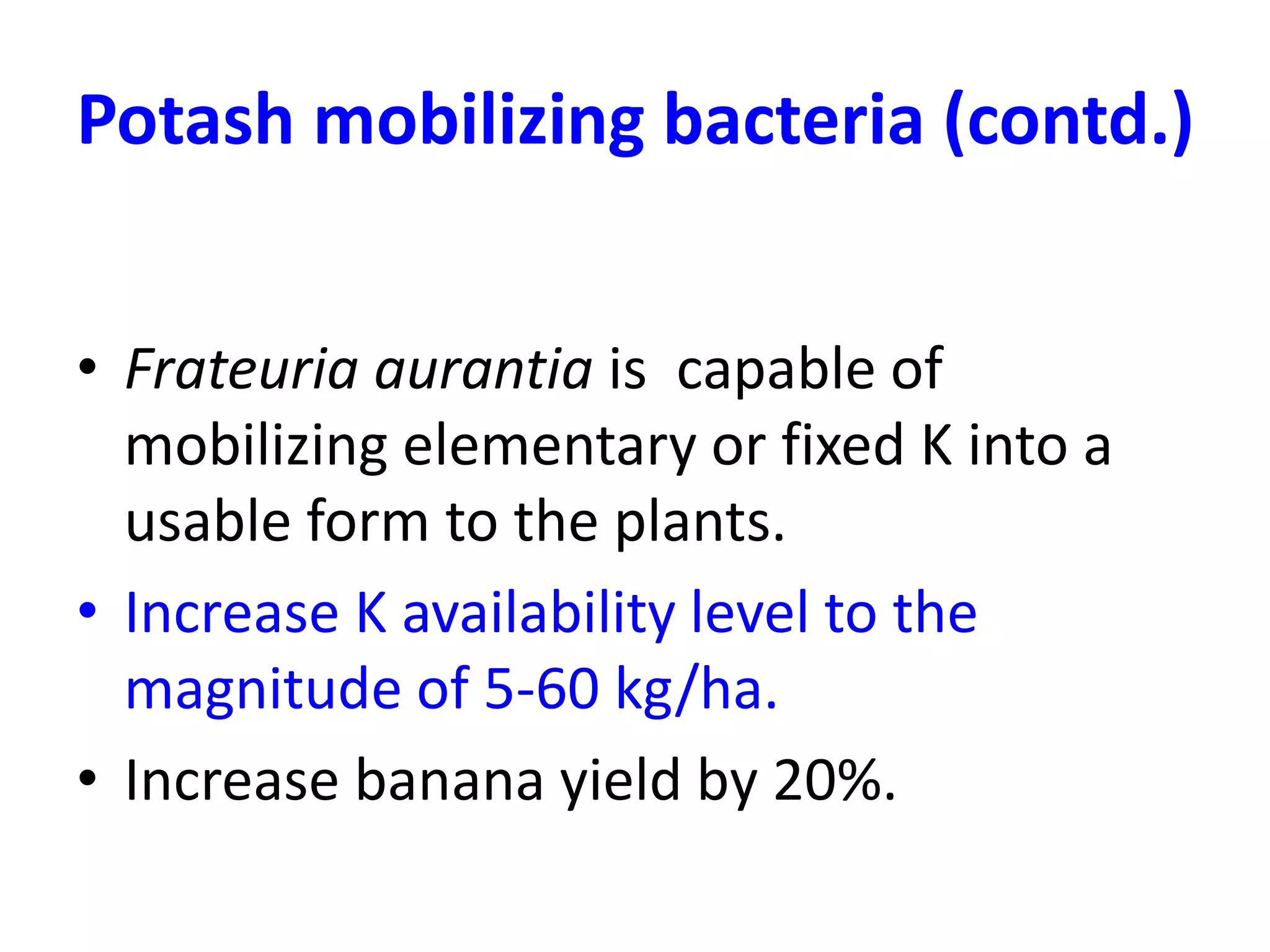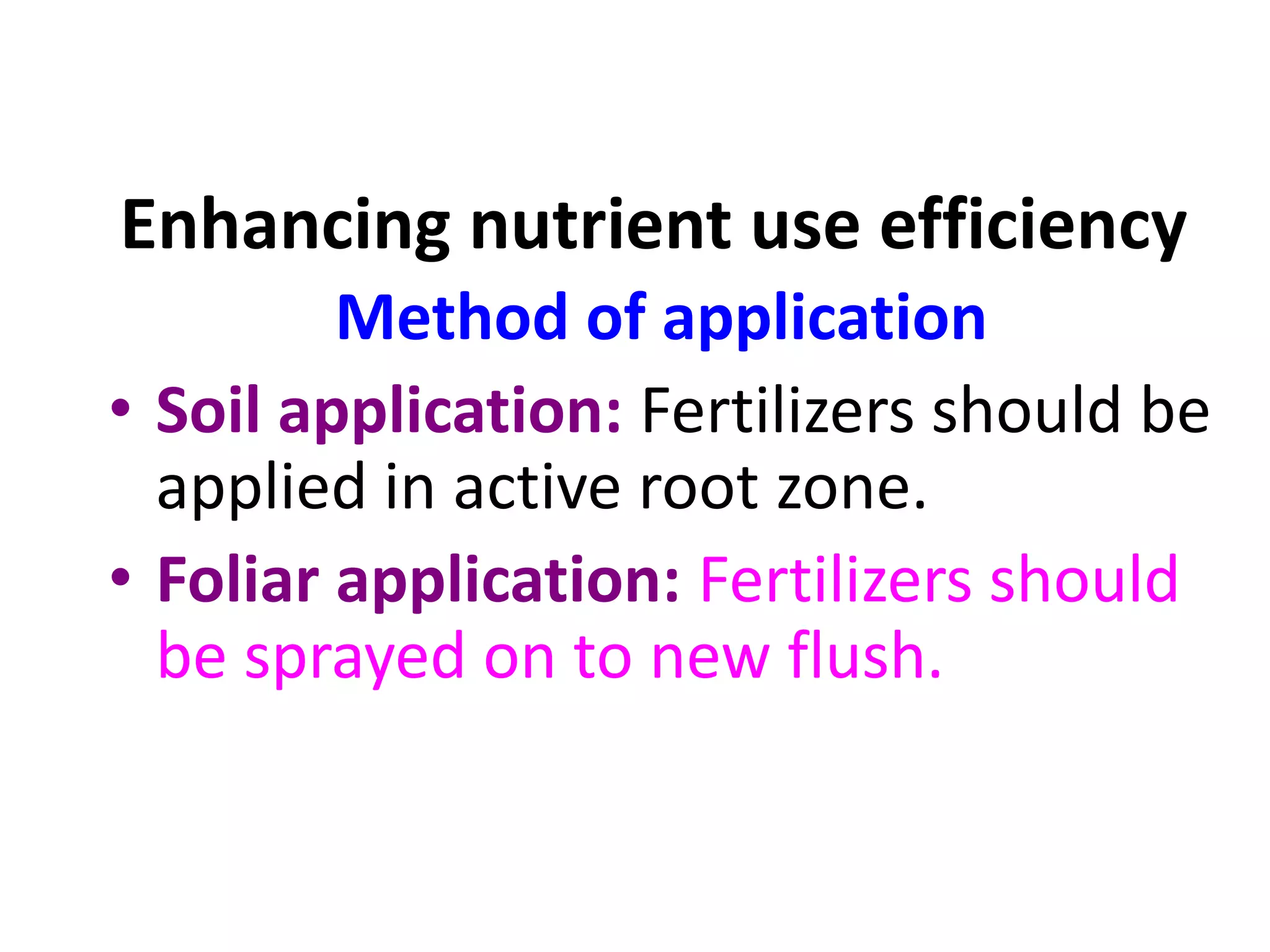This document discusses fertilizer recommendations based on soil test values. It provides information on essential plant nutrients and their functions. It explains how soil testing helps determine nutrient deficiencies and excess in different areas. Based on the soil test results for nitrogen, phosphorus and potassium, fertilizer recommendations can be modified by increasing or decreasing the recommended doses depending on whether the soil nutrient levels are low, medium or high. The document also provides methods for analyzing different soil properties and interpreting the results.

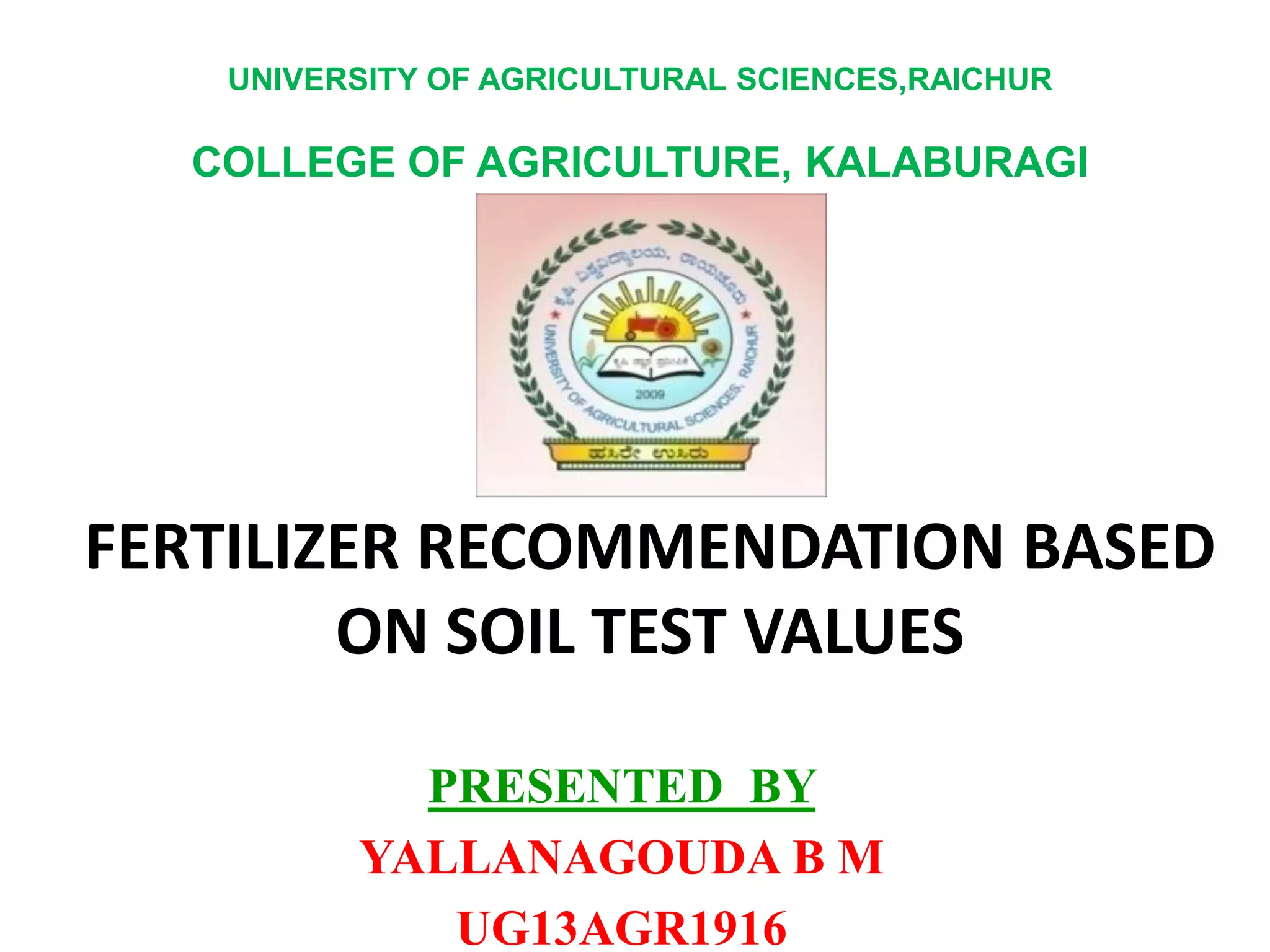
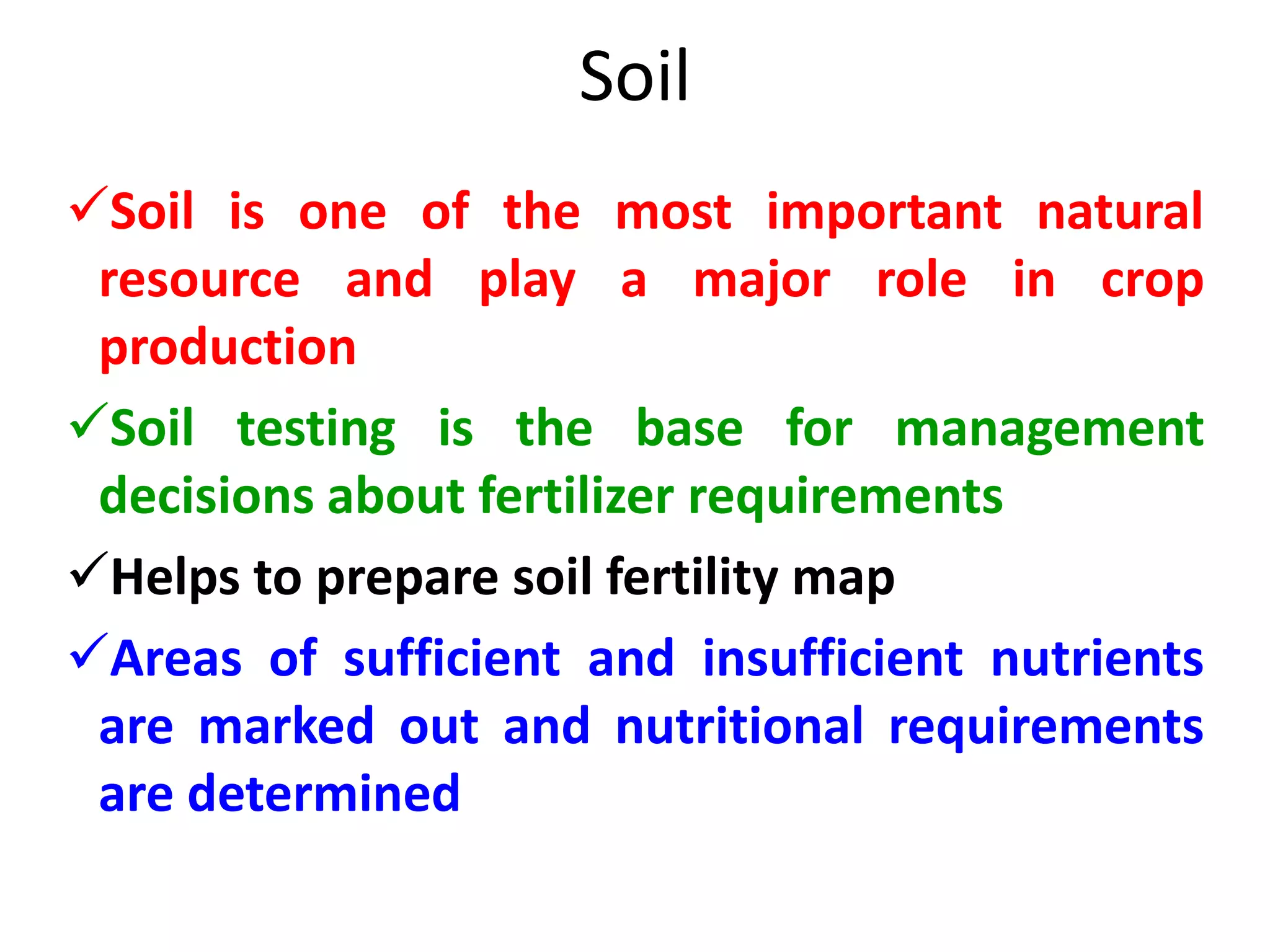

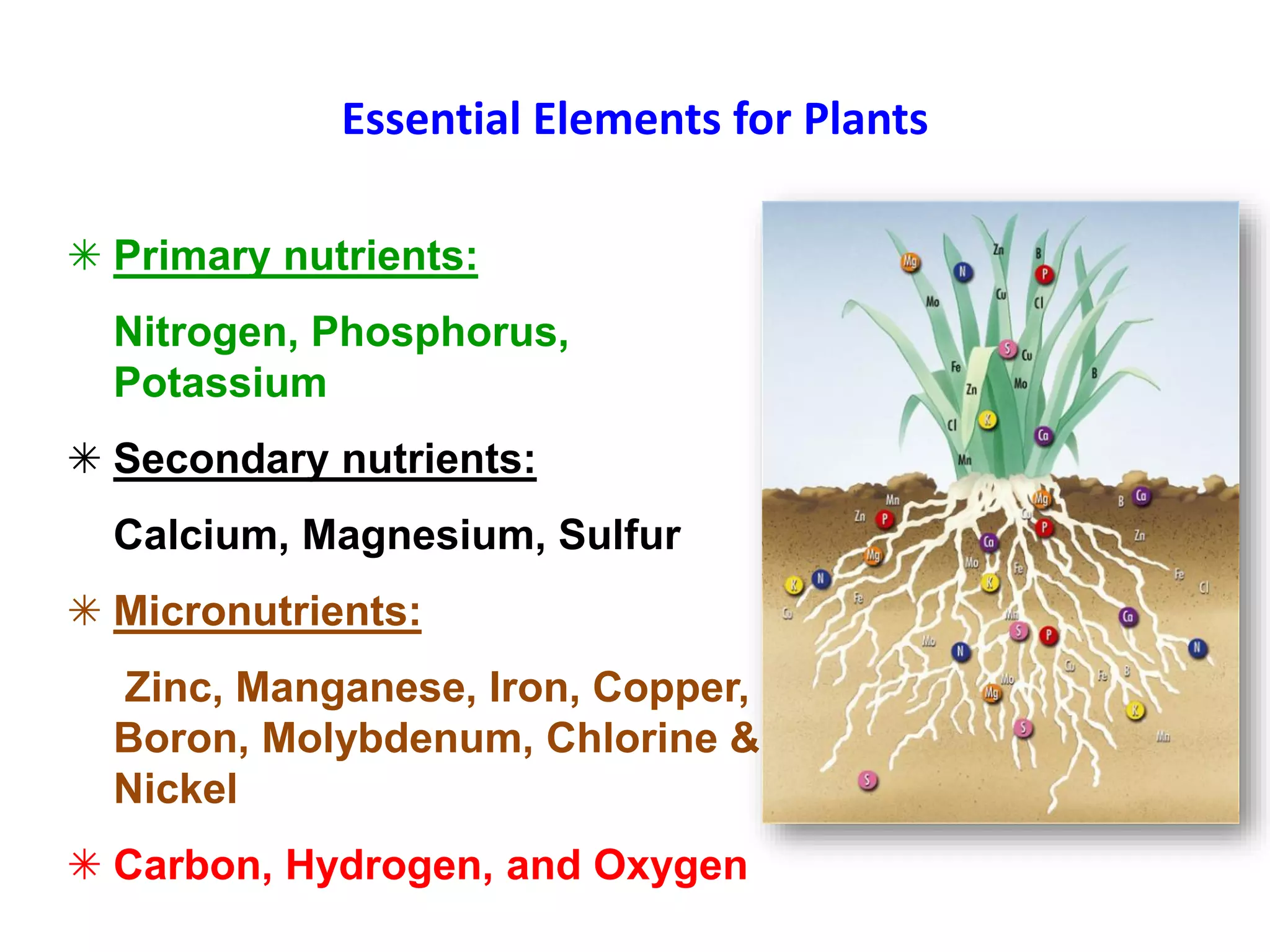
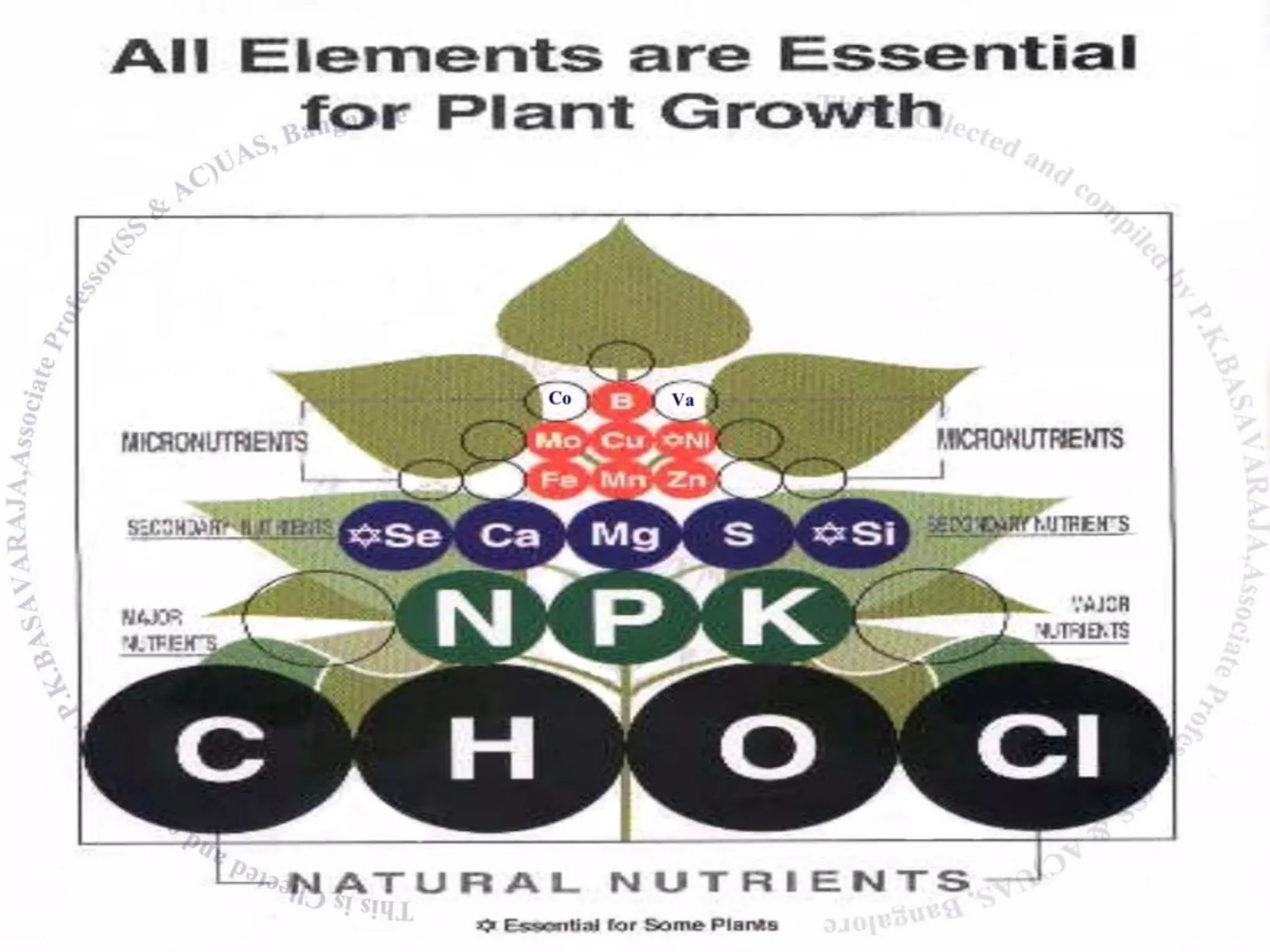
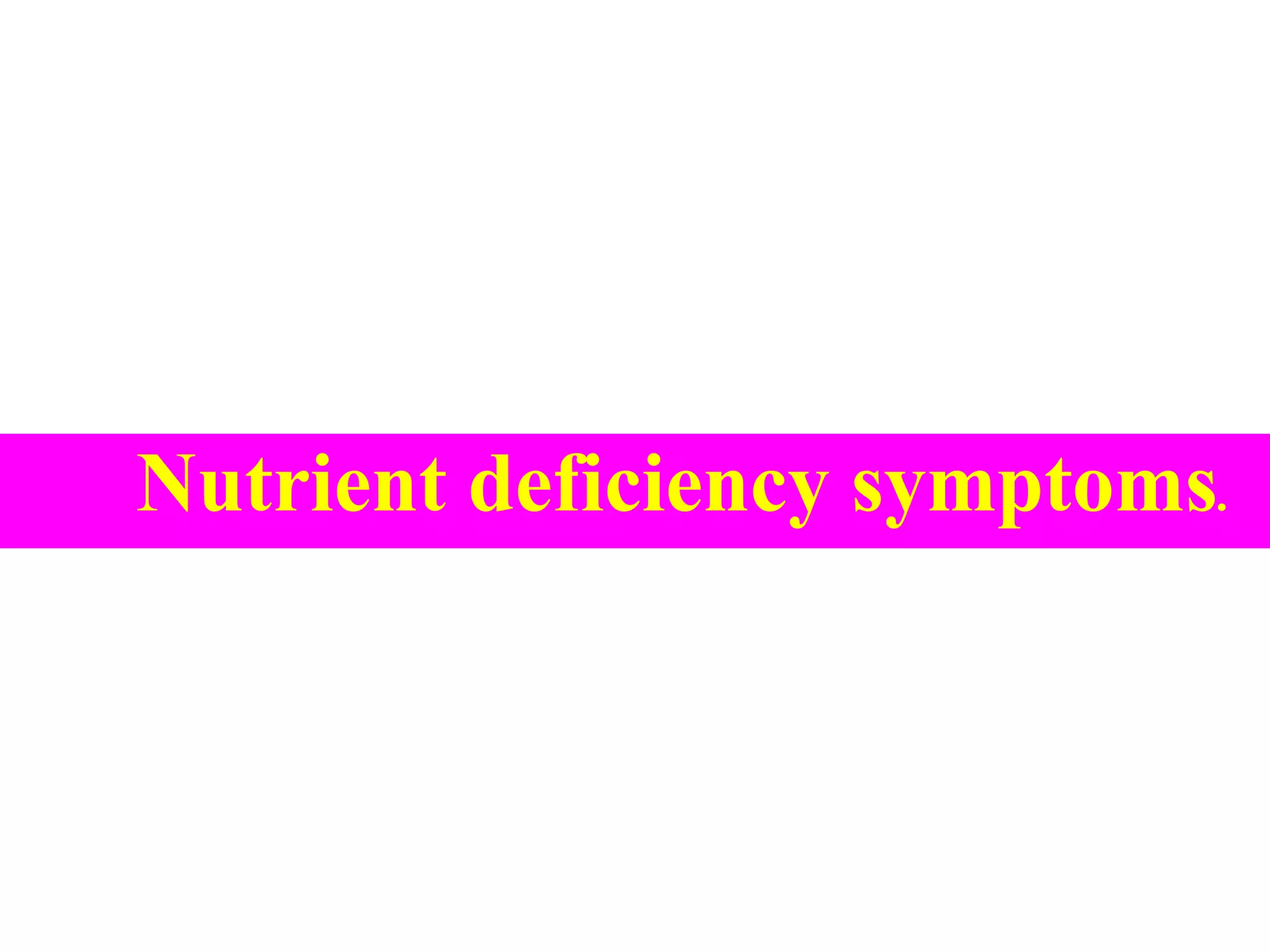
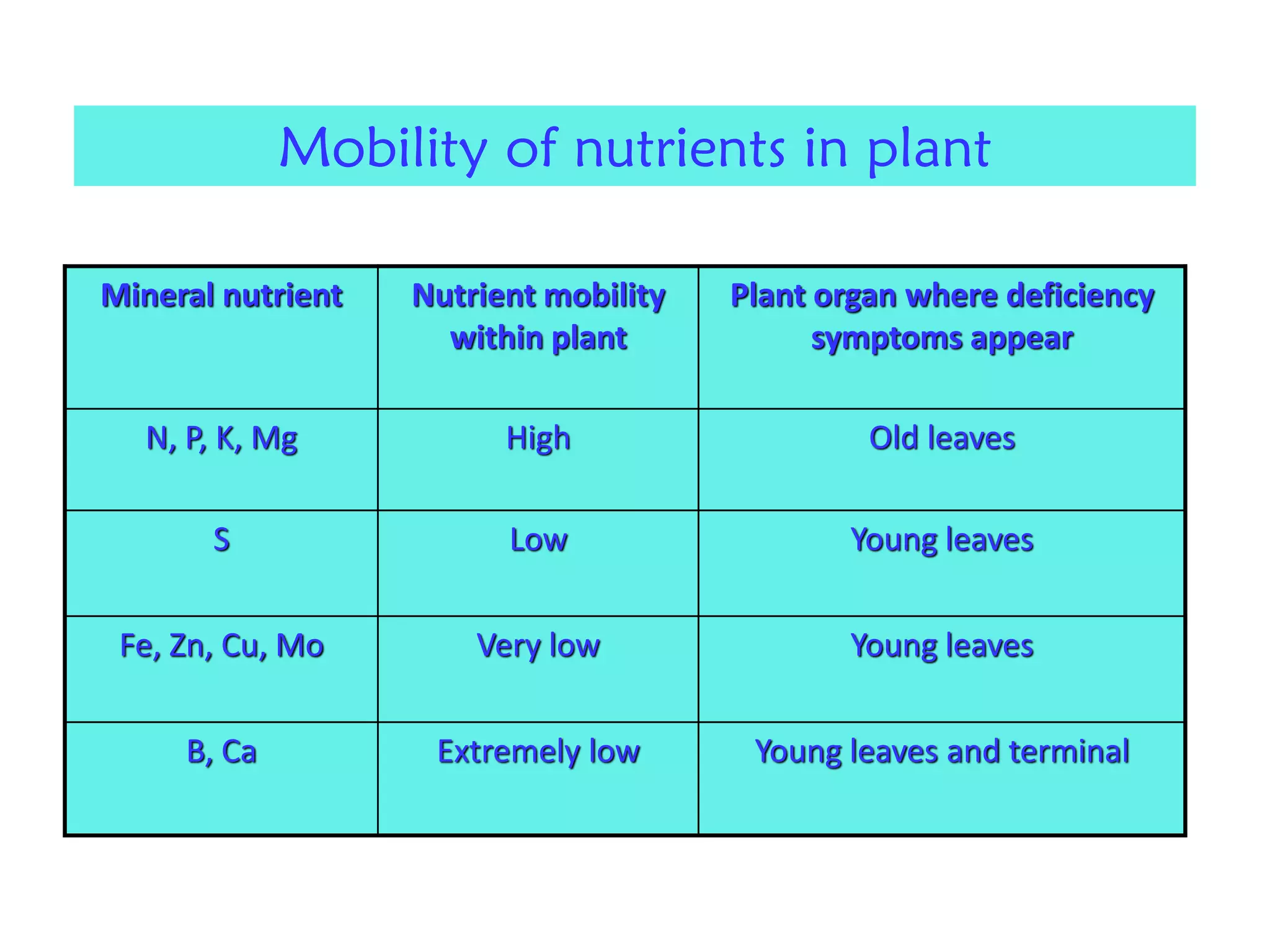
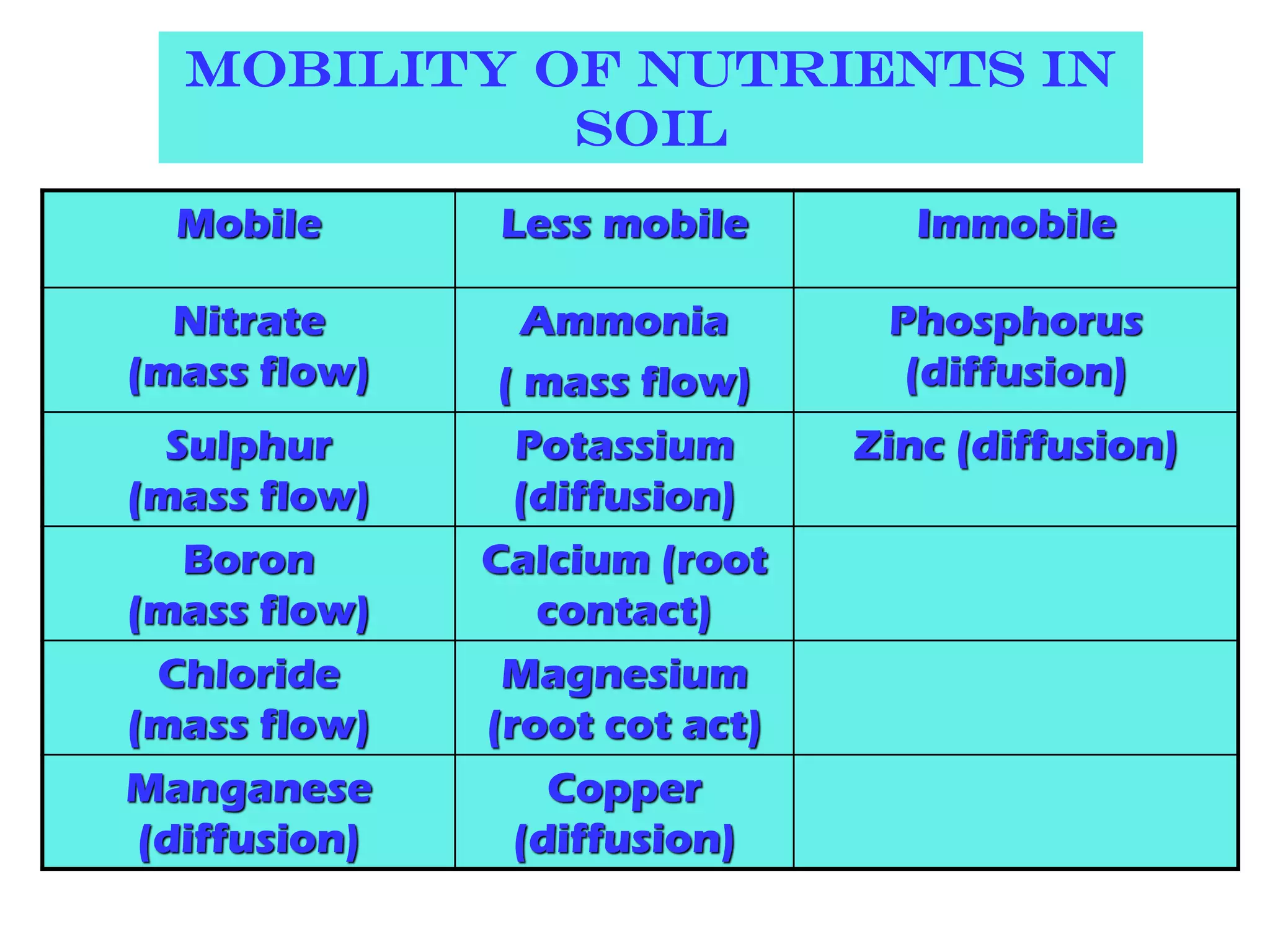

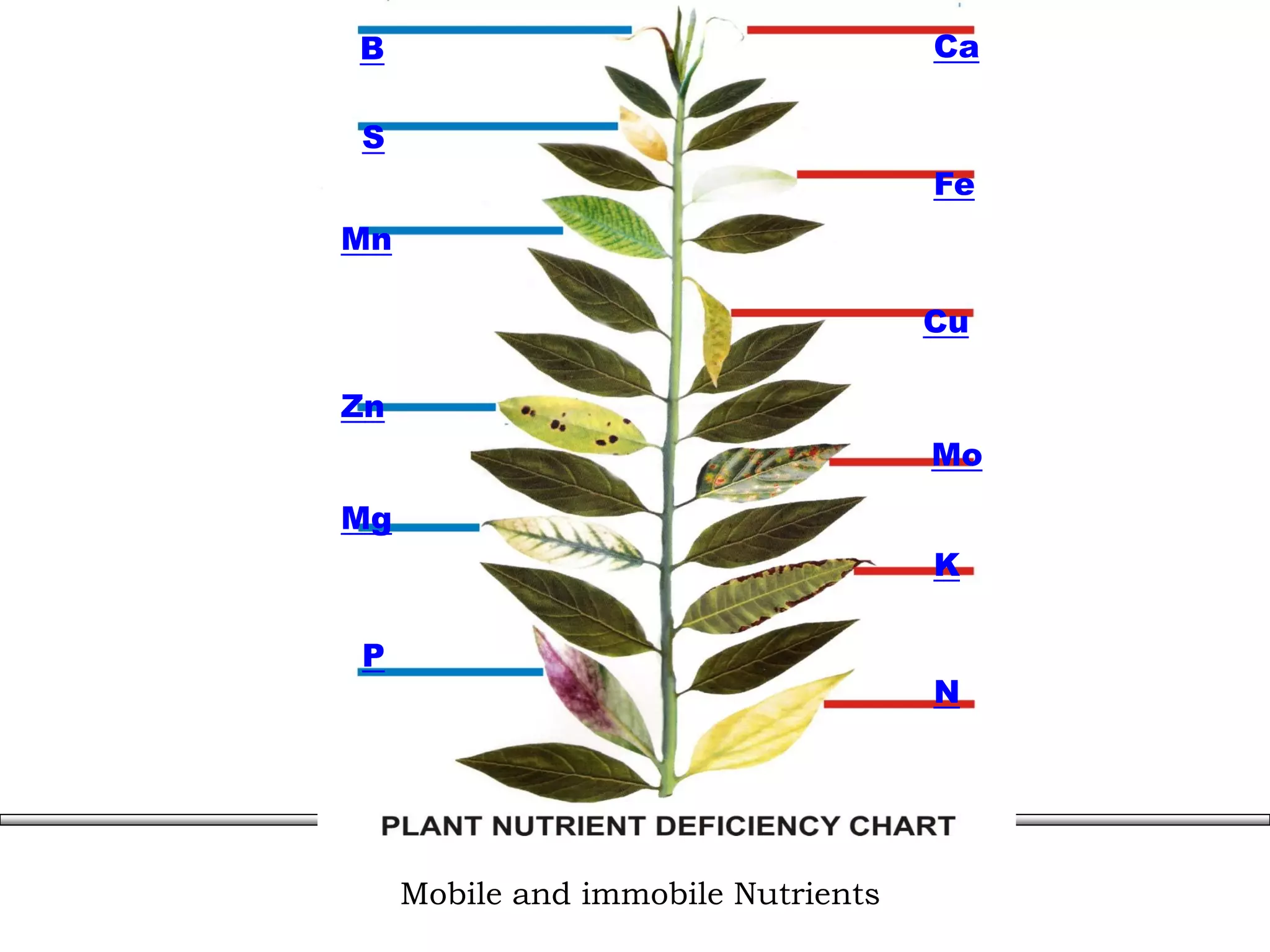

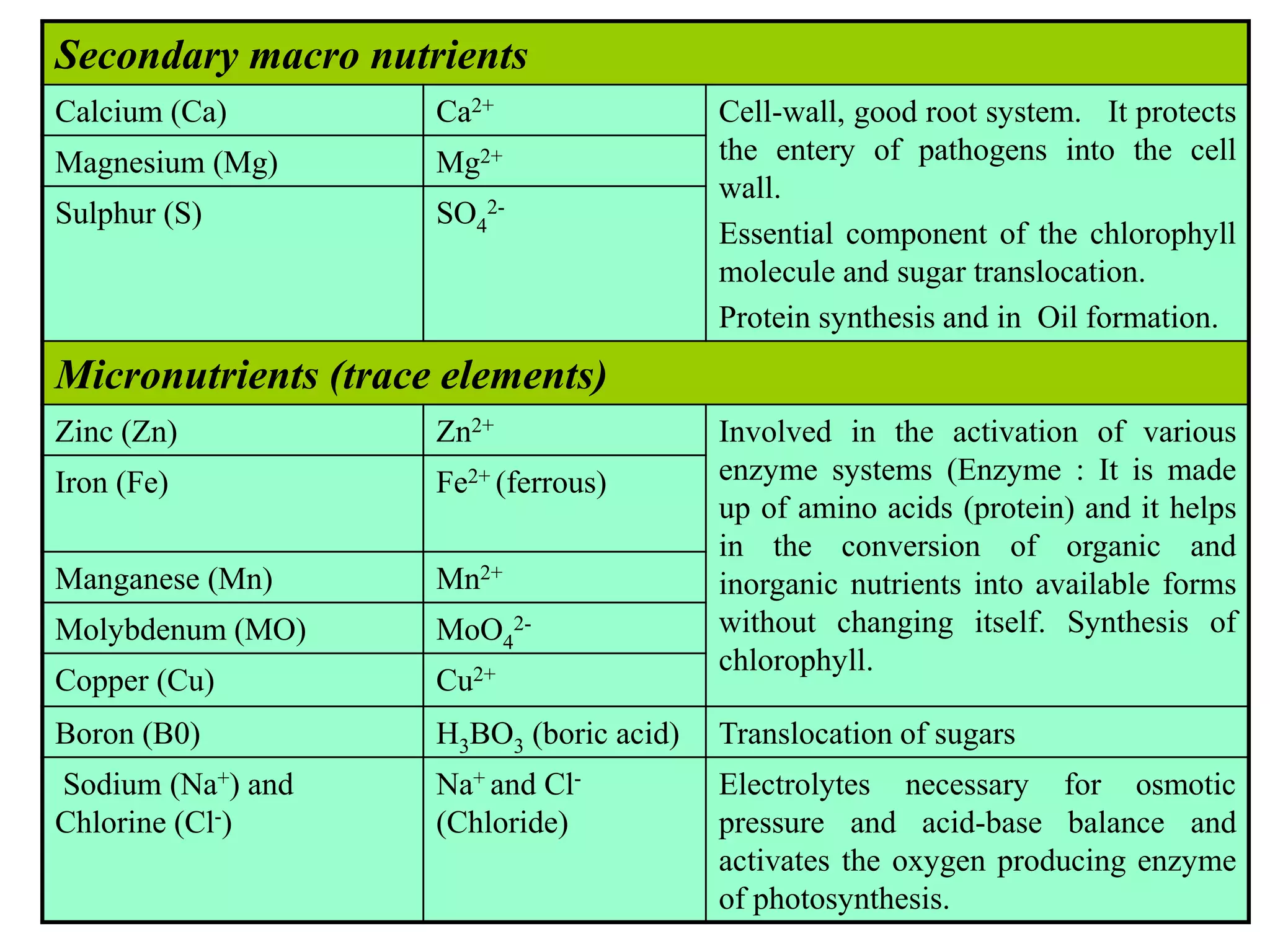
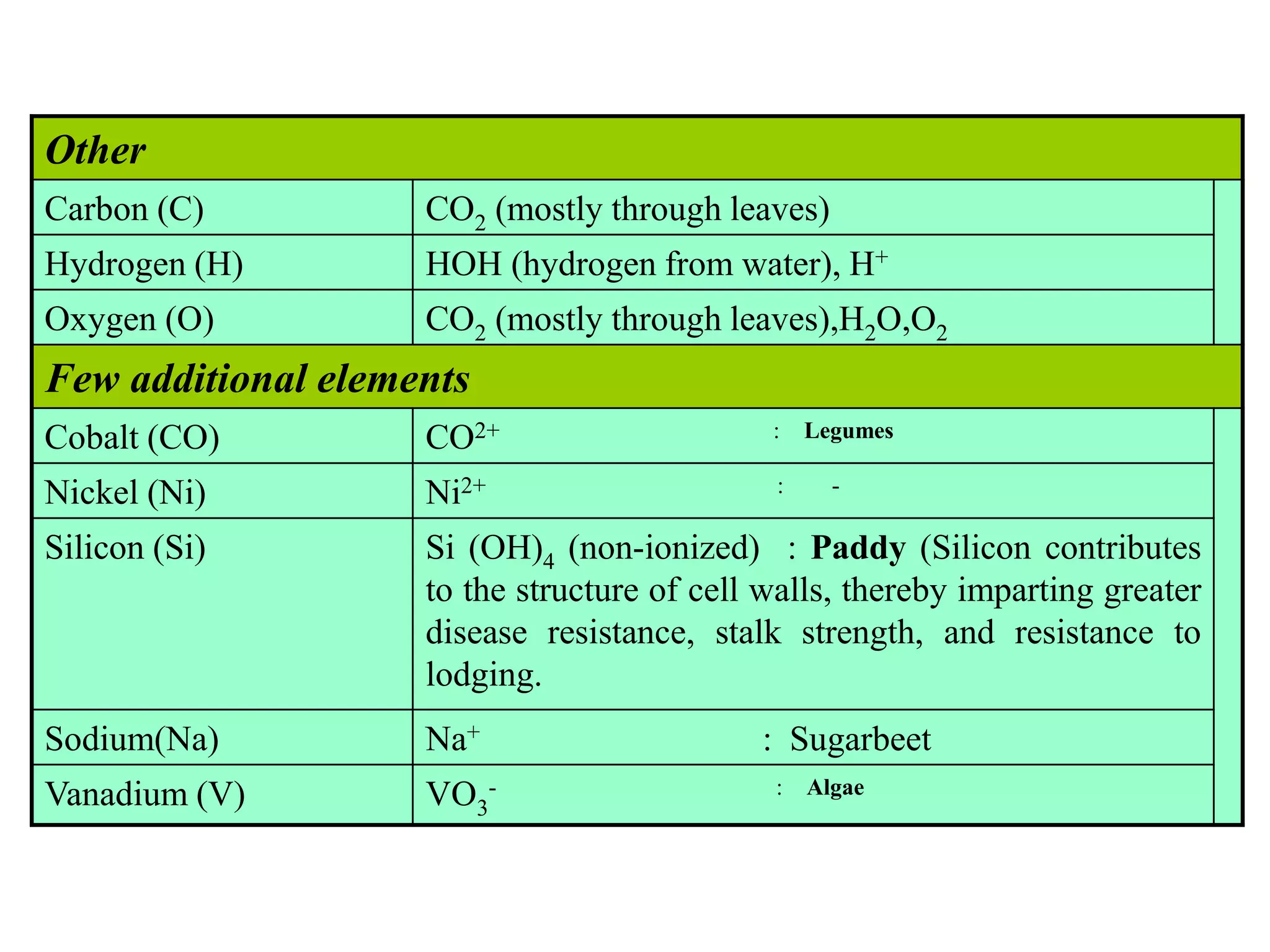

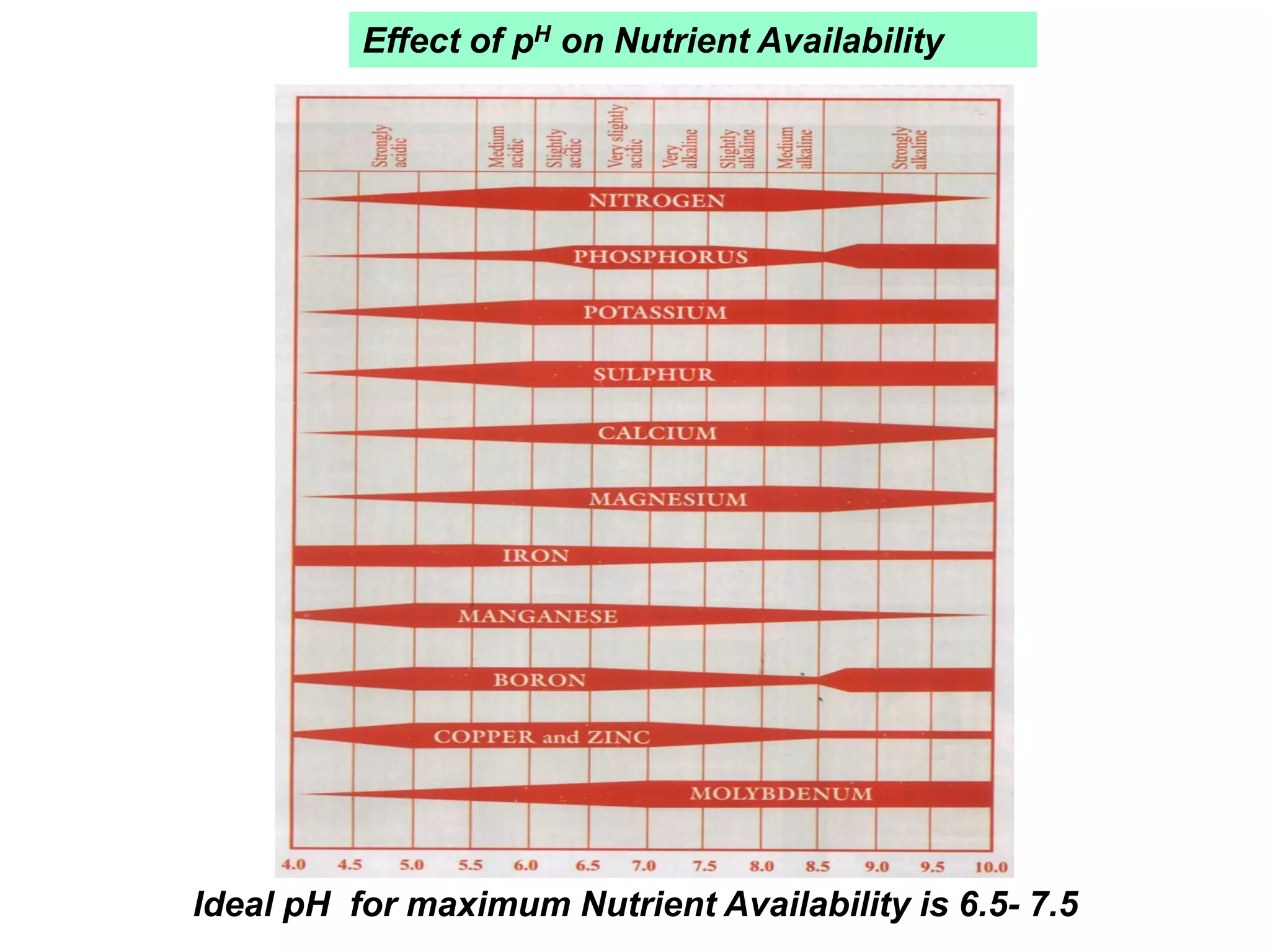
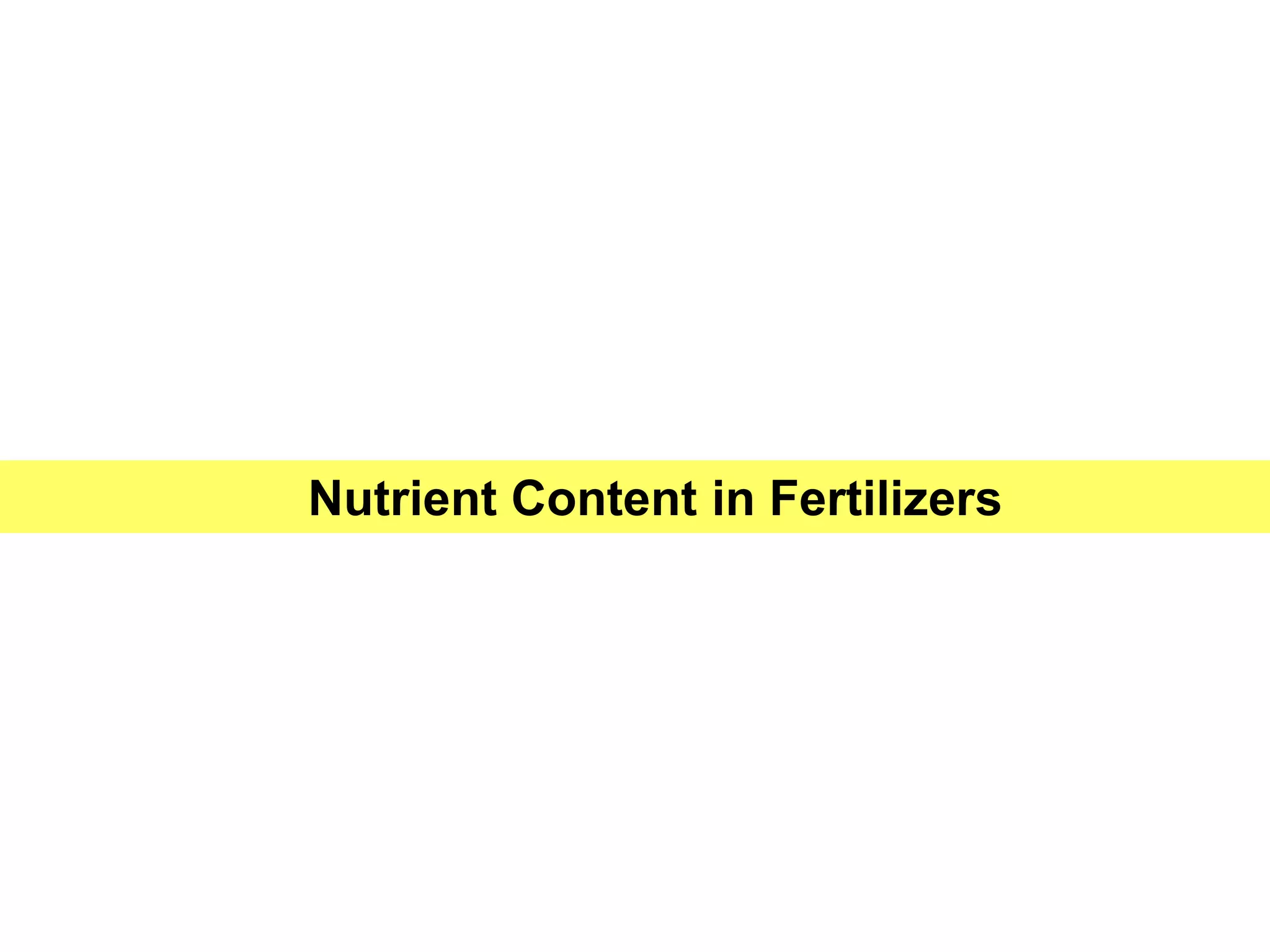
![Sl.
No.
Fertilizer Formula Nutrient Content (%)
1. Ammonium Sulphate [(NH4)2SO4] 20.5 N, 24 S
2. Urea [CO(NH2)2] 46 N
3. Calcium Ammonium Nitrate [Ca(NH4NO3)2] 26 N
4. Ammonium Chloride [NH4Cl) 26 N
5. Ammonium Molybdata [(NH4)6MO7O24] 52 Mo
6. Ammonium Nitrate [NH4NO3] 17NH4, 17NO3
7. Sodium Nitrate [NaNO3] 15- 16 NO-
3
8. Ammonium Sulphate
Nitrate
[(NH4)2 SO4NH4NO3] 26 N, 6.5 NO3, 19.5
NH4
9. Ammonia (Aqueous Ammonia) 80 N
10. Ammonium Phosphate
Sulphate
16 N, 20 P2O515 S](https://image.slidesharecdn.com/yallanagouda-210505045749/75/FERTILIZER-RECOMMENDATION-BASED-ON-SOIL-TEST-VALUES-18-2048.jpg)
![11. Mono Ammonium
Phosphate
[NH4. H2PO4] 48 P2O5, 11 N
12. Single Super Phosphate [Ca (H2PO4]2 16 P2O5, 12 S
13. Diammonium Phosphate [(NH4)2 HPO4] 46 P2O5, 18 N
14. Double Super Phosphate - 32 P2 O5
15. Triple Super Phosphate - 48 P2 O5
16. Nitro Phosphate - 20 N, 20 P2O5
17. Bonemeal - 22 P, 1-2 N
18. Basic Slag - 6-20 P2O5
19. Rock Phosphate [Ca3(PO4)2] 18-20 P2O5
20. Muraite of Potash KCl 60 K2O](https://image.slidesharecdn.com/yallanagouda-210505045749/75/FERTILIZER-RECOMMENDATION-BASED-ON-SOIL-TEST-VALUES-19-2048.jpg)
![21. Sulphate of Potash K2SO4 50 K2O, 18 S
22. Calcium Sulphate [CaSO4. 2H2O] 16-19 Ca, 13 S
23. Mangesium Sulphate [MgSO4. 7H2O]
16 Mgo, 13 S
24. Elemental Sulphur -
85-100, 15 S
25. Phosphogypsum - 16 S
26. Zinc Sulphate [ZnSO4. 7H2)]
21 Zn, 12 S
27. Chelated Zinc (EDTA form)
12 Zn
28. Iron Sulphate [FeSO4. 7H2O] 19 Fe, 19 S
29. Chelated Iron (EDTA form) 12 Fe
30. Copper Sulphate CuSO4. 5H2O] 24 Cu, 13 S](https://image.slidesharecdn.com/yallanagouda-210505045749/75/FERTILIZER-RECOMMENDATION-BASED-ON-SOIL-TEST-VALUES-20-2048.jpg)
![31. Zinc Sulphate Mono
Hydrate
- 33 Zn
32. Manganese Sulphate [MnSO4. H2O] 30.5 Mn. 15 S
33. Borax (Soil application) [Na2B4O7. 10H2O] H2BO3
-,
HBO3
10.5 B
34. Solubar (foliar spray) Na2B4O7.5H2O+Na2B10O16.1
0 H2O
19 B
35. Pyrite(Agric. Grade) 22 S, others Fe
36. Sodium Molybodate NaMoO4. 2H2O 41 Mo](https://image.slidesharecdn.com/yallanagouda-210505045749/75/FERTILIZER-RECOMMENDATION-BASED-ON-SOIL-TEST-VALUES-21-2048.jpg)
